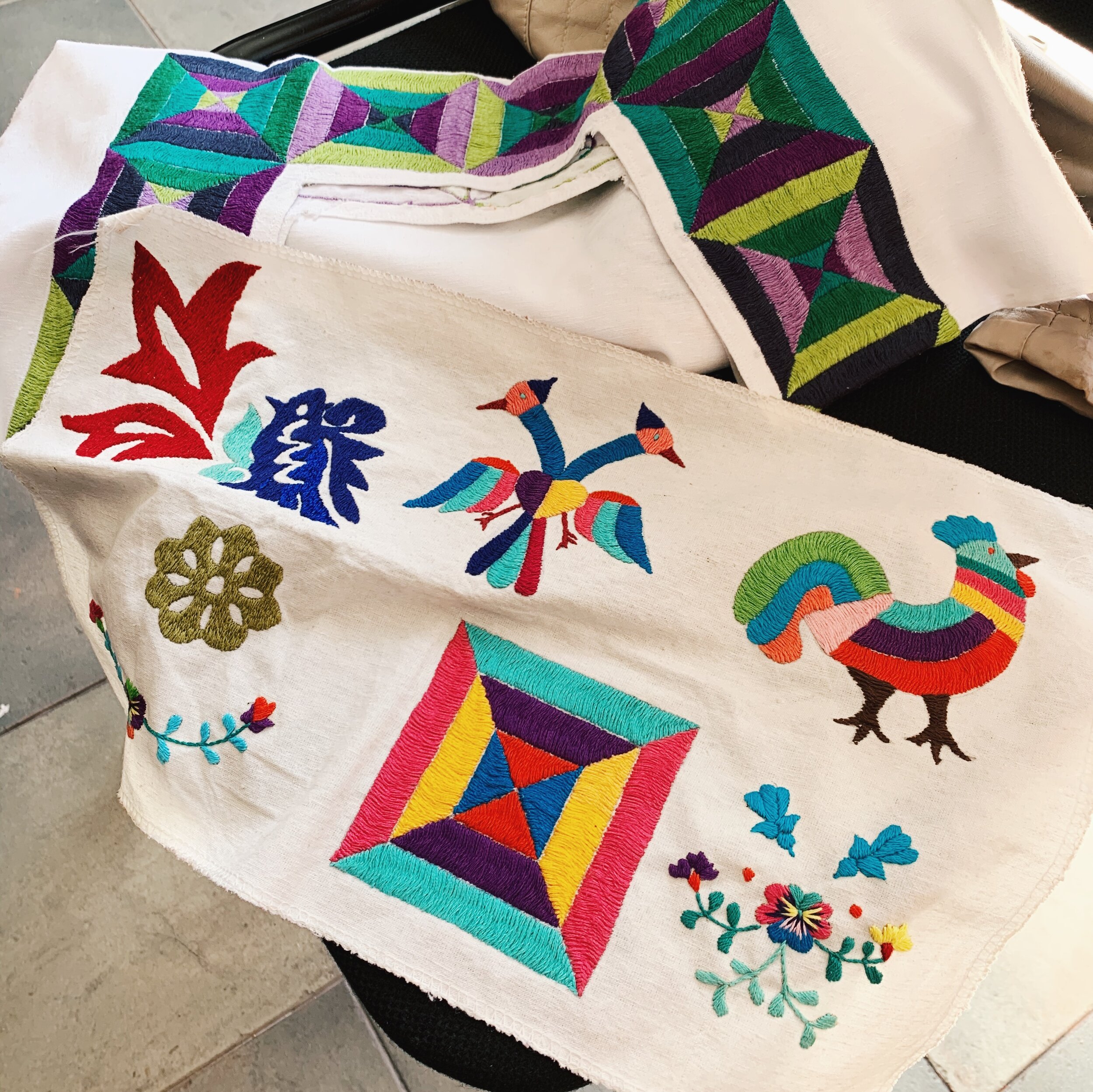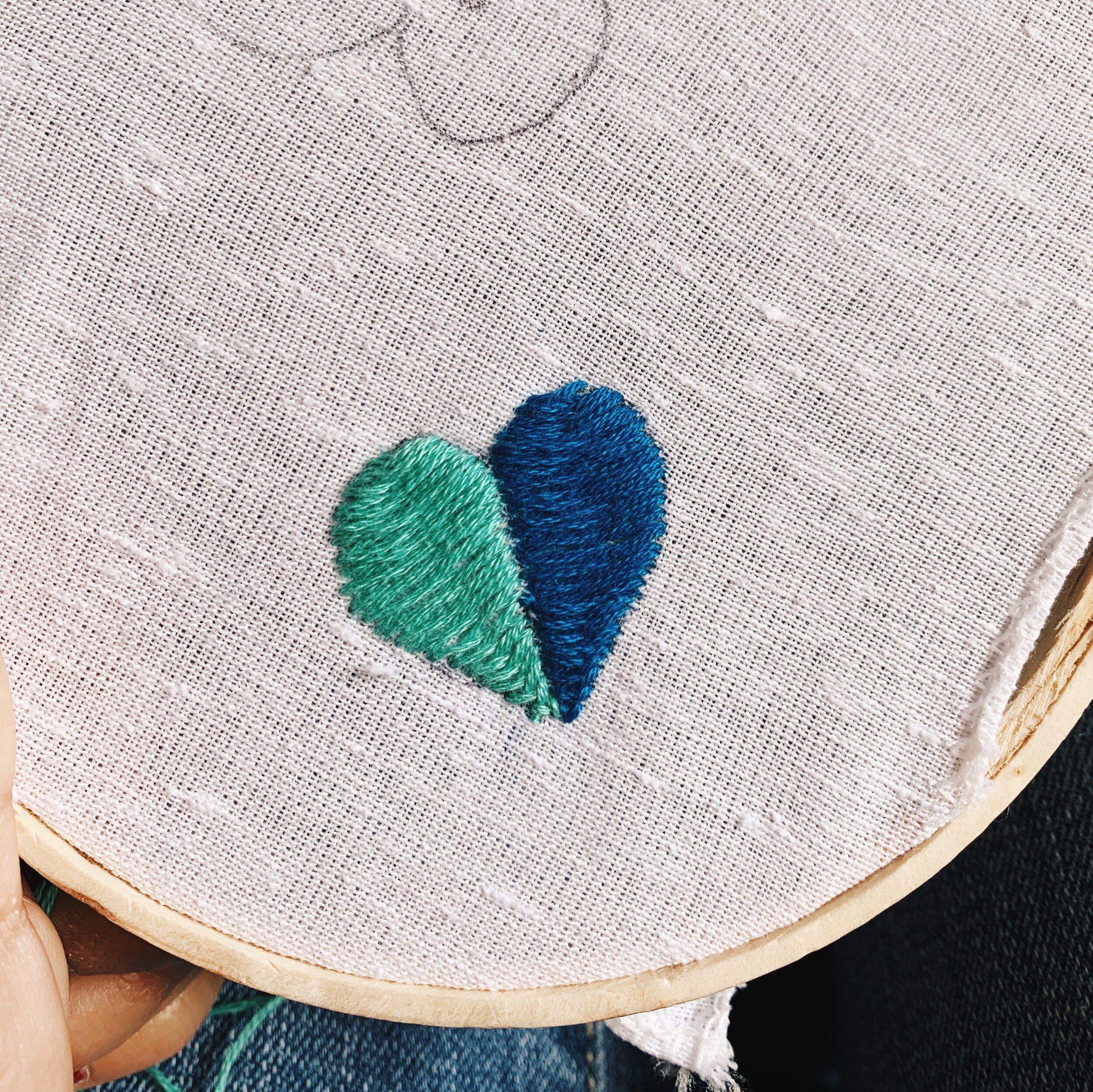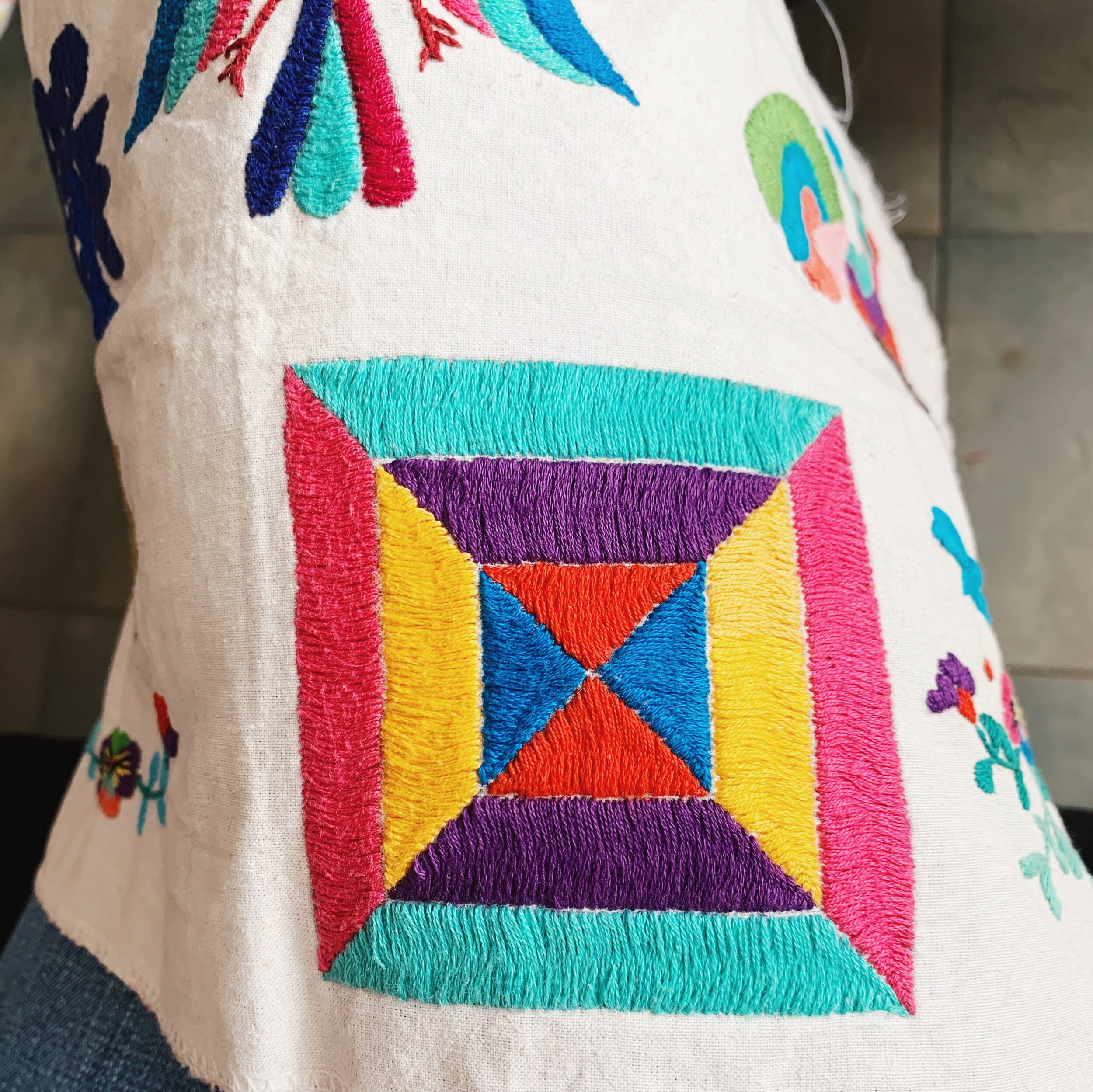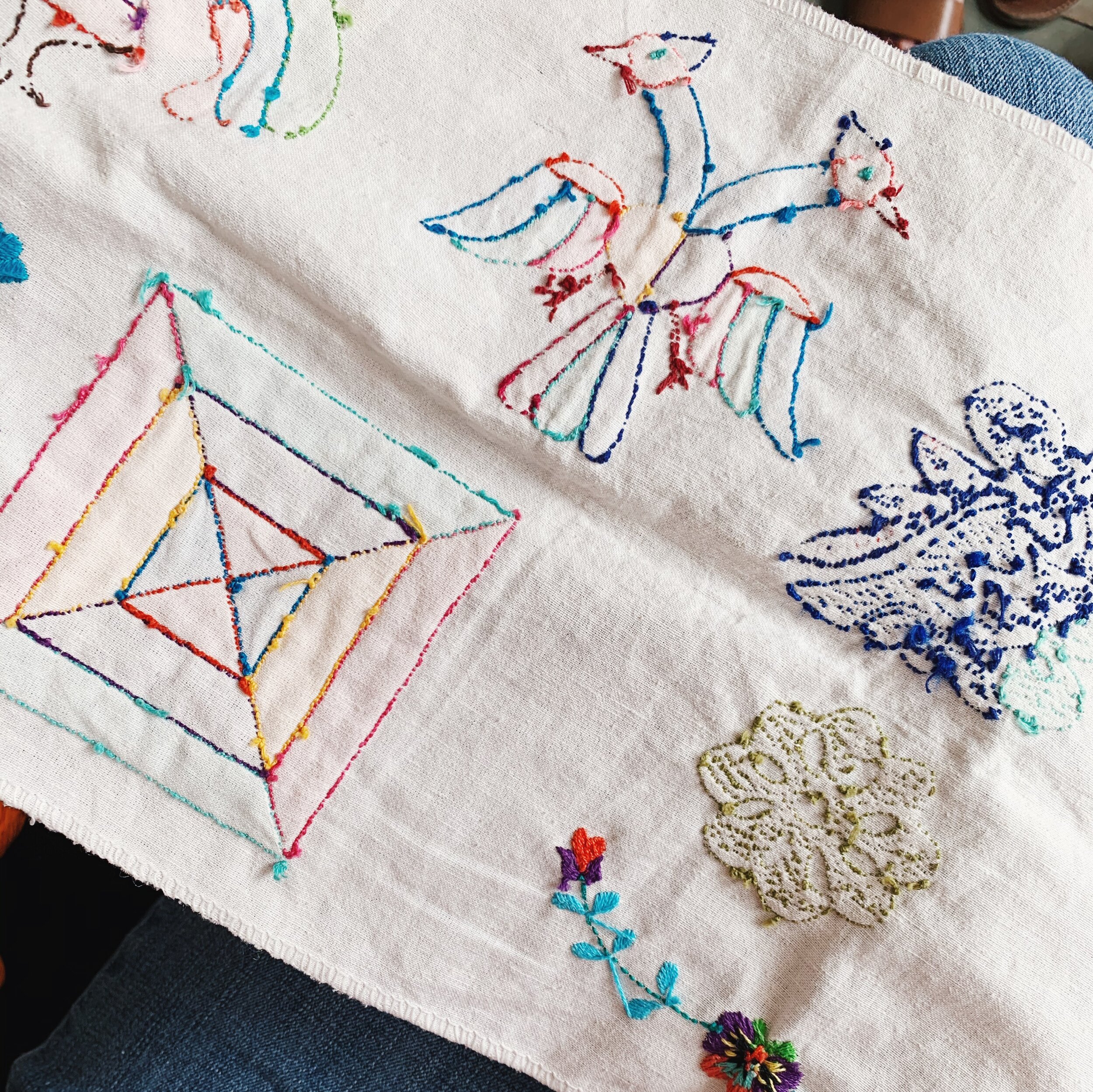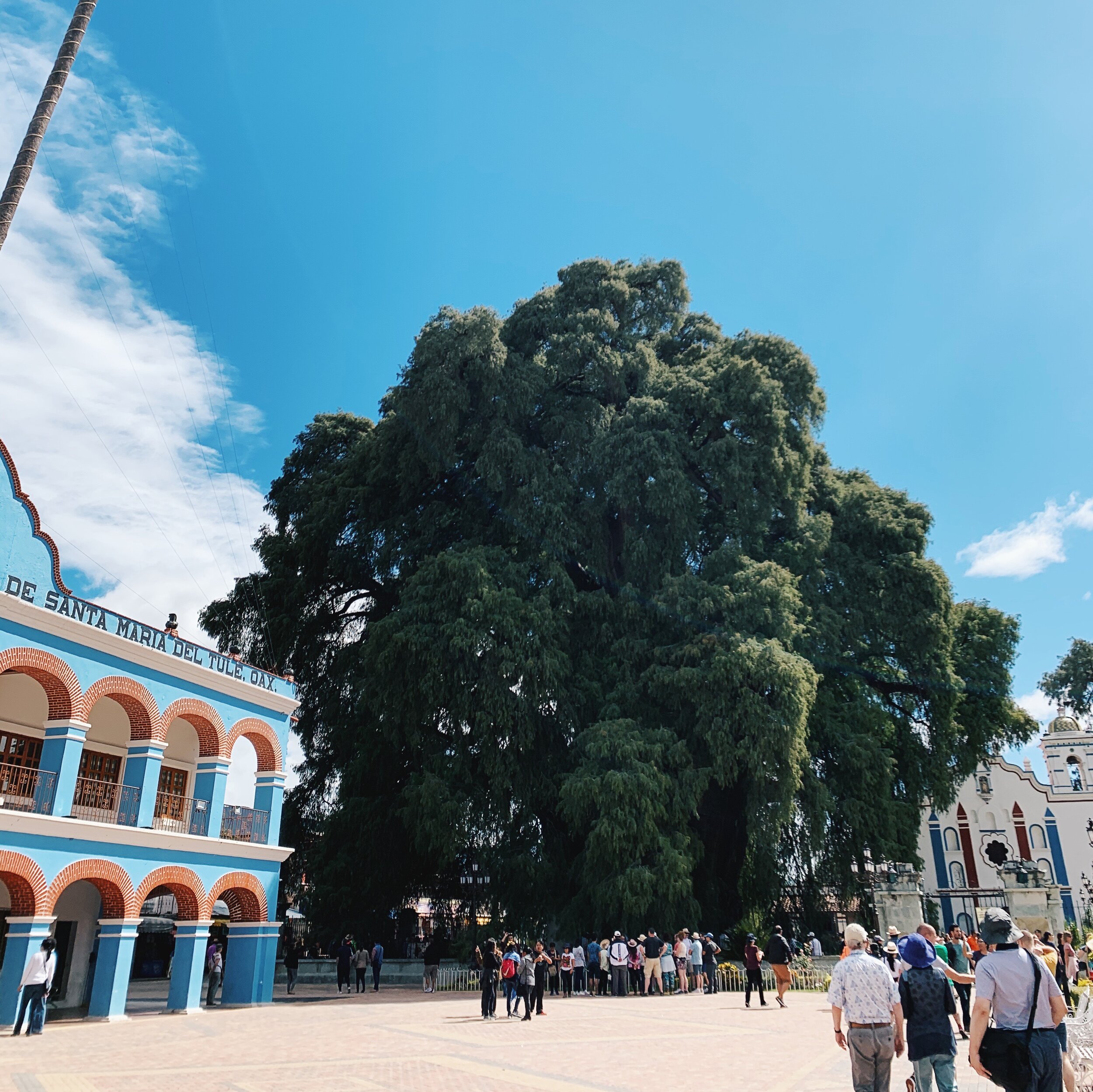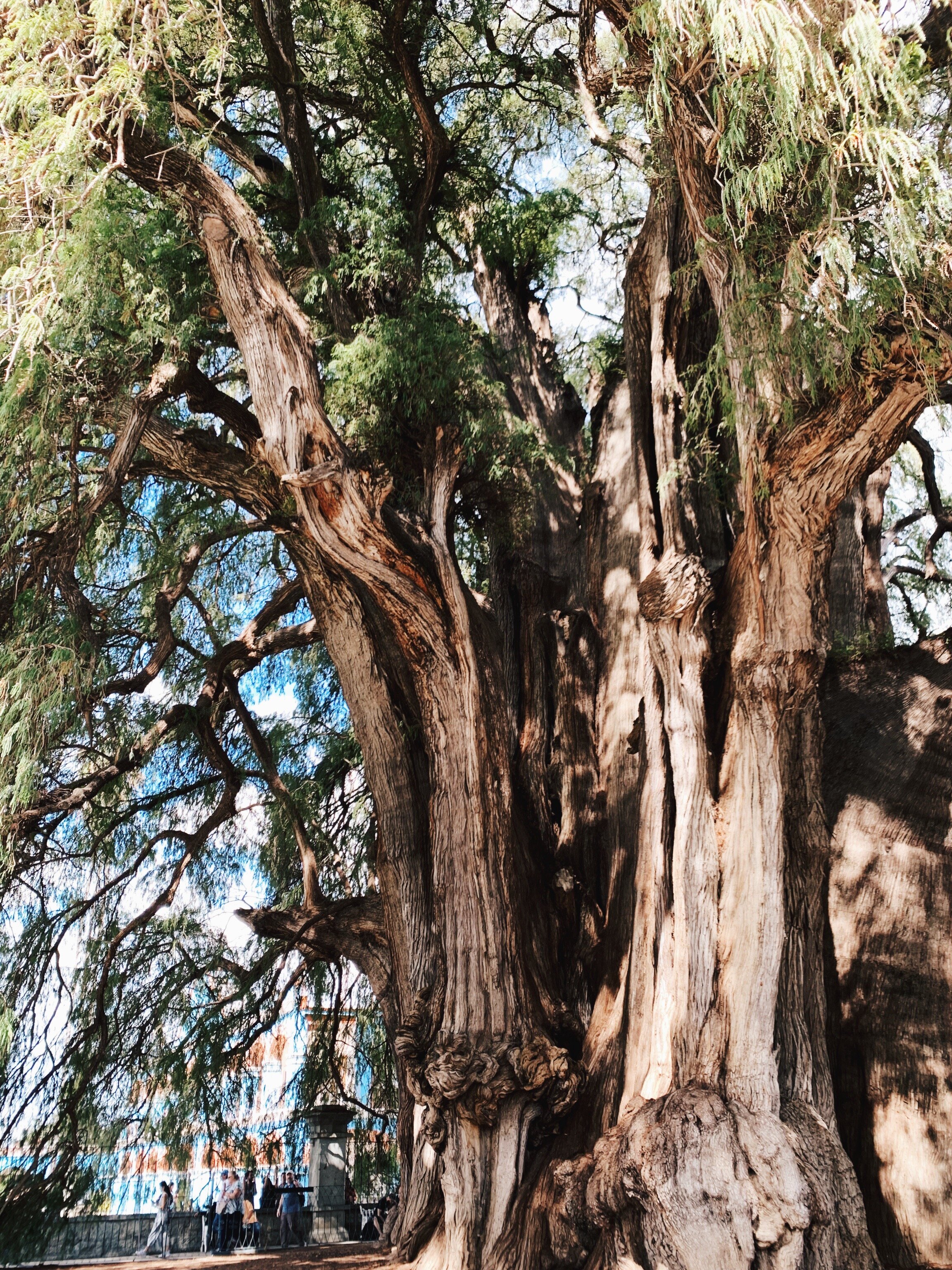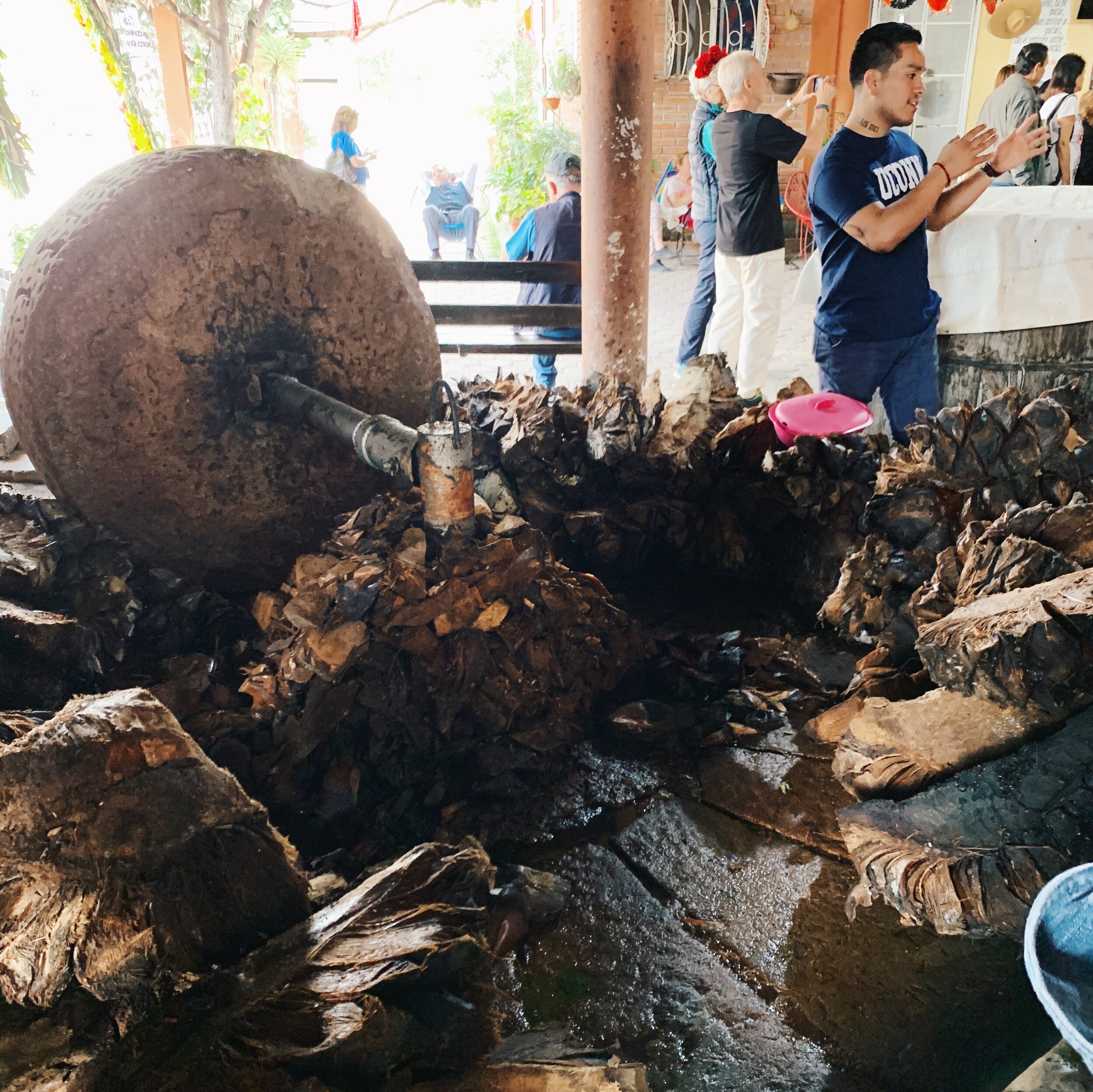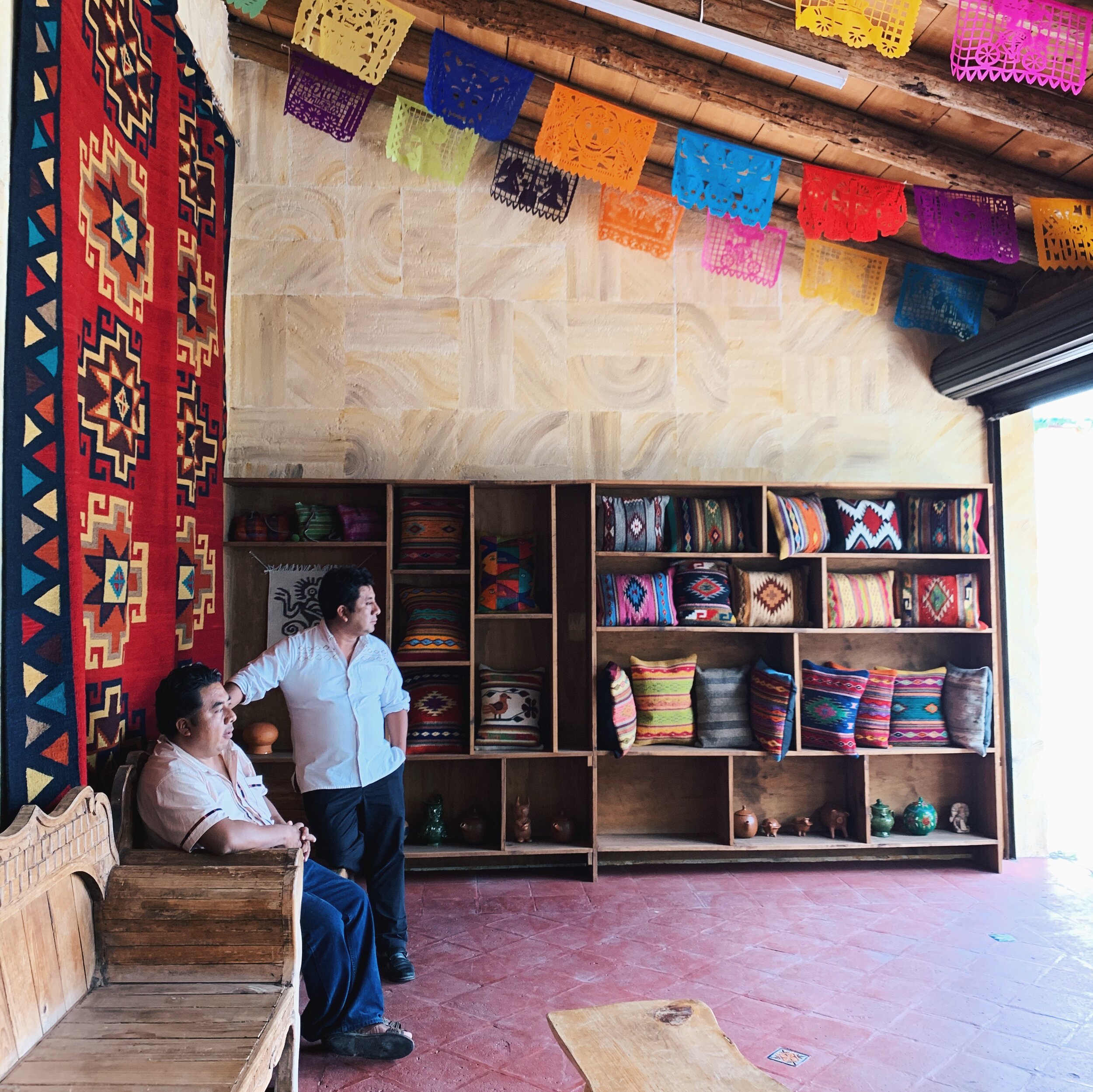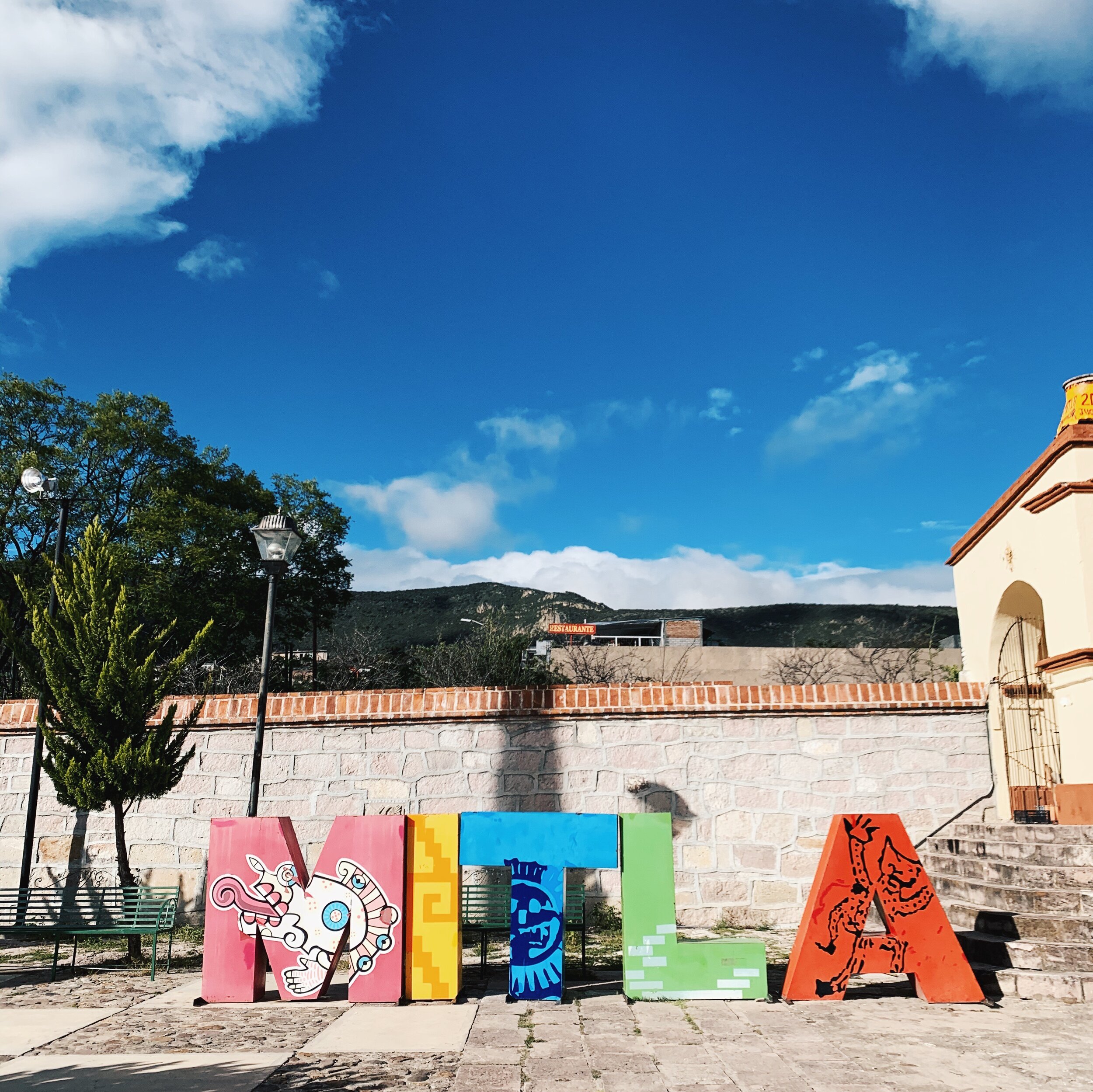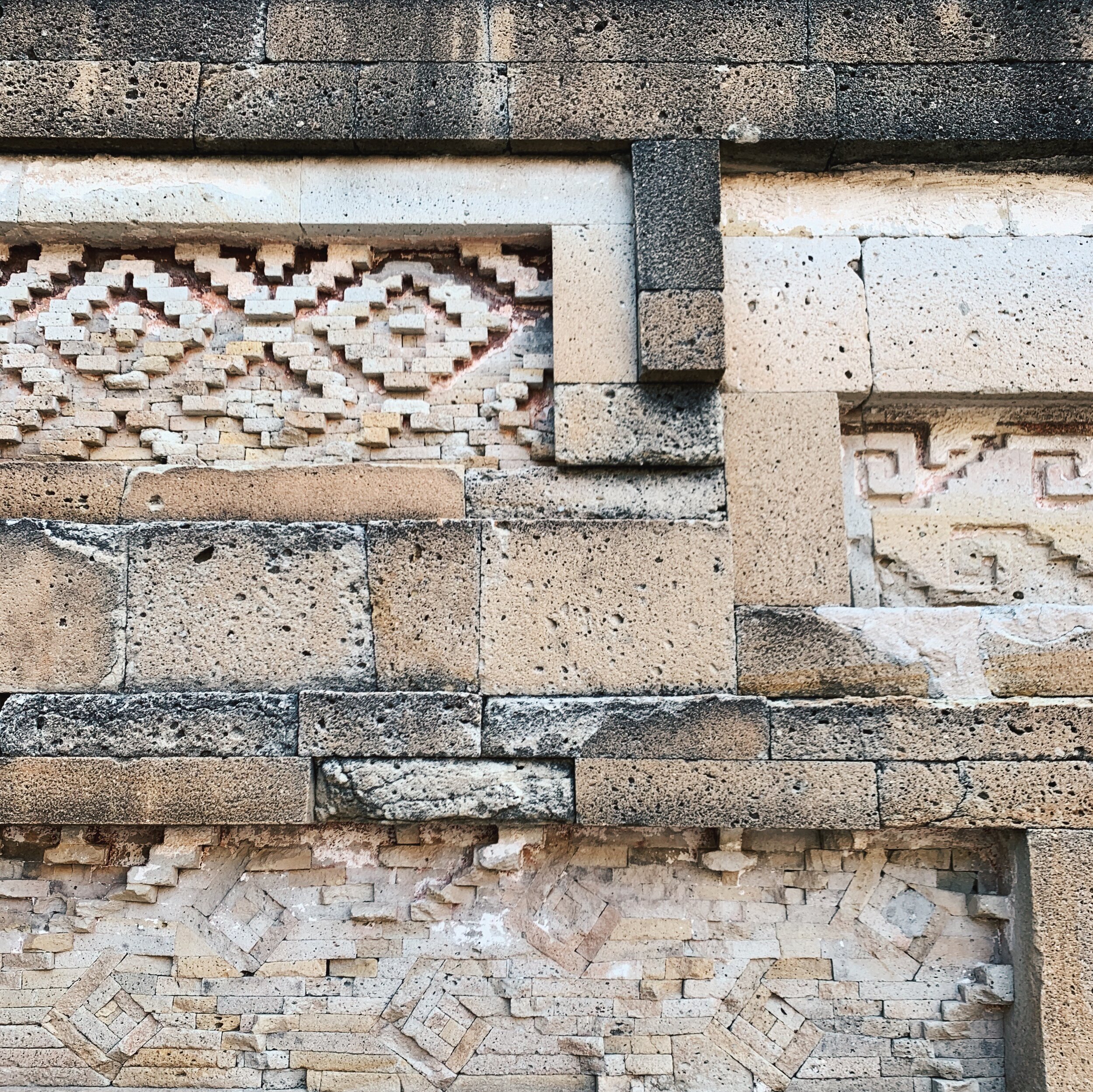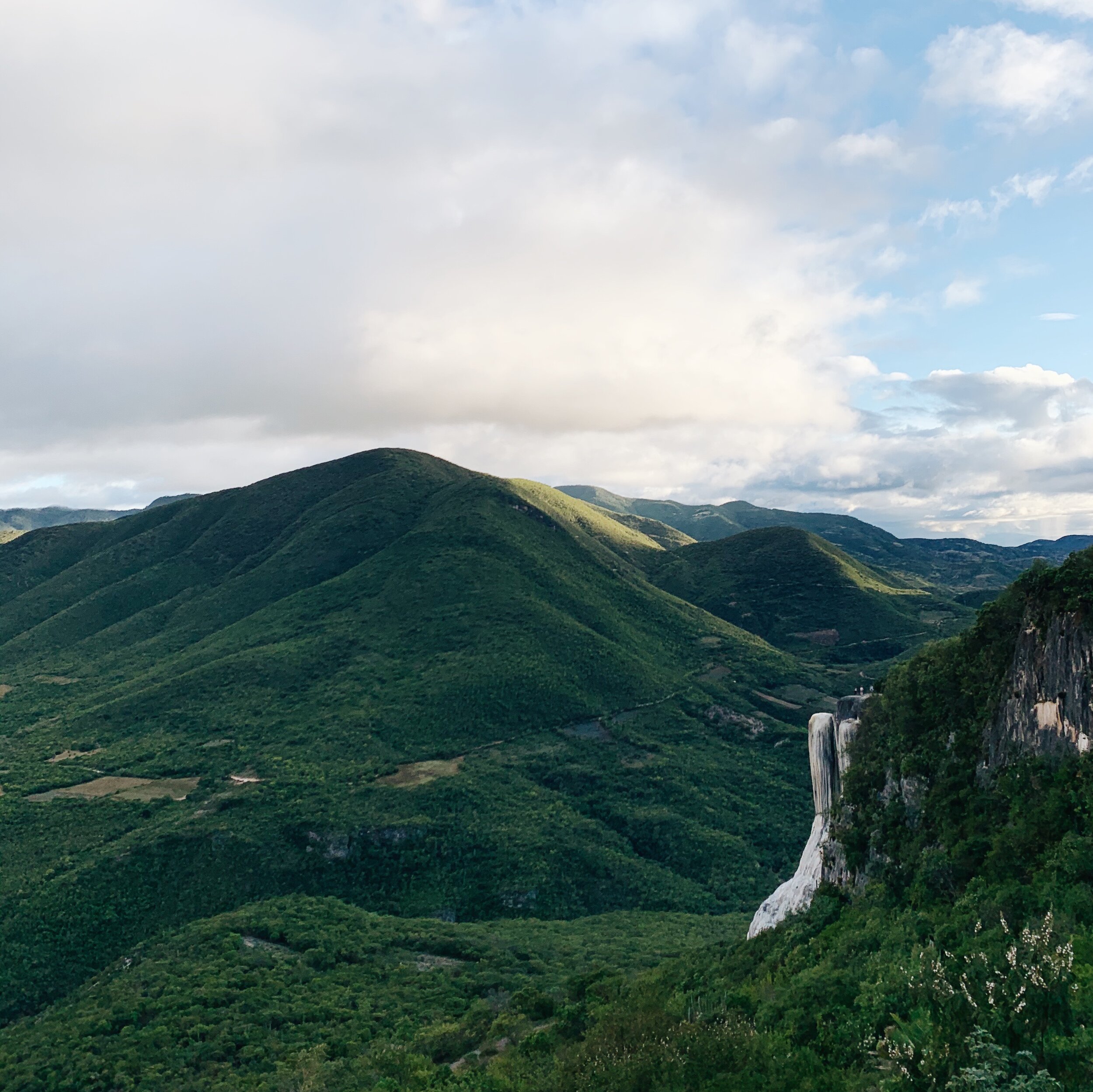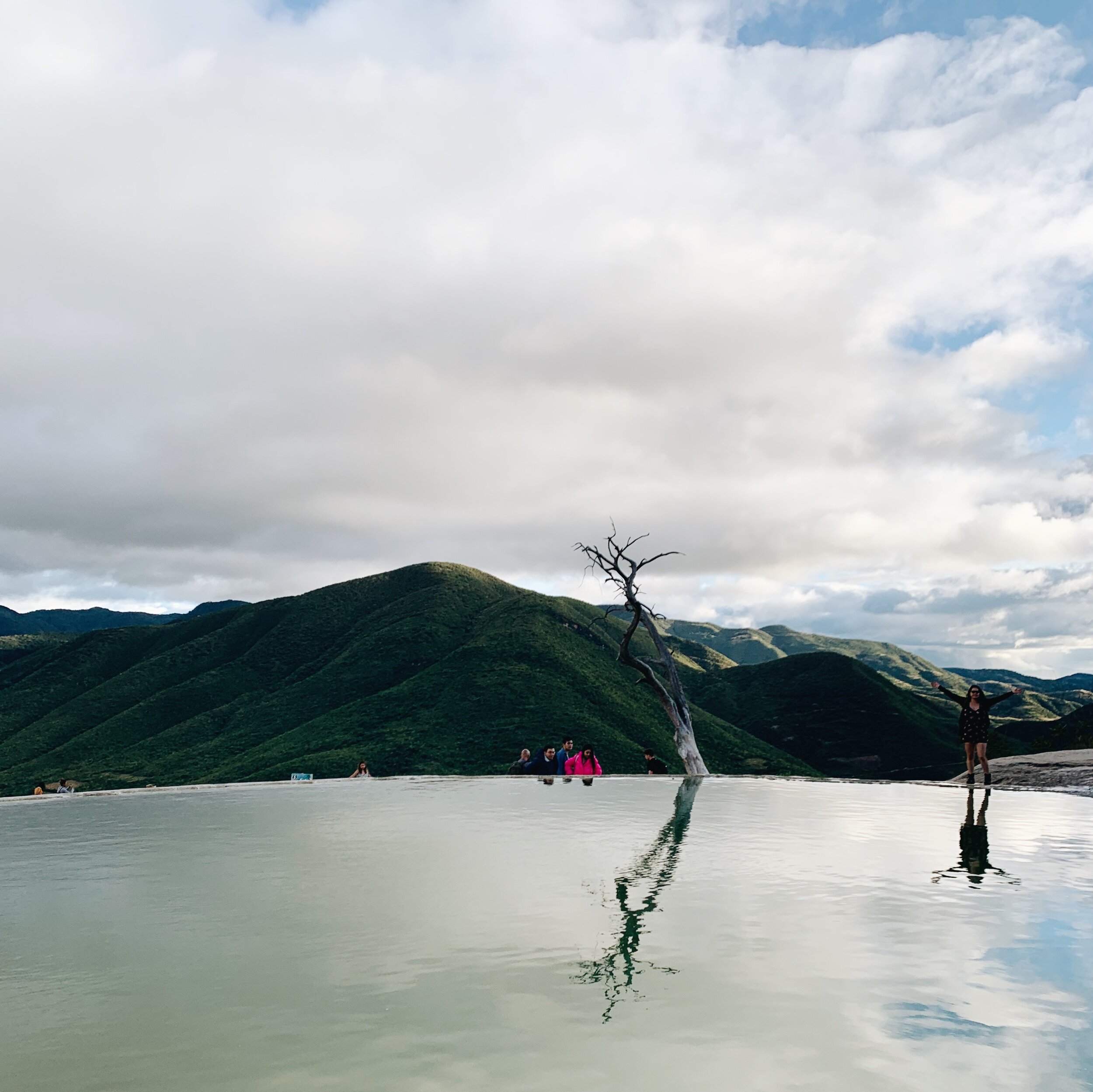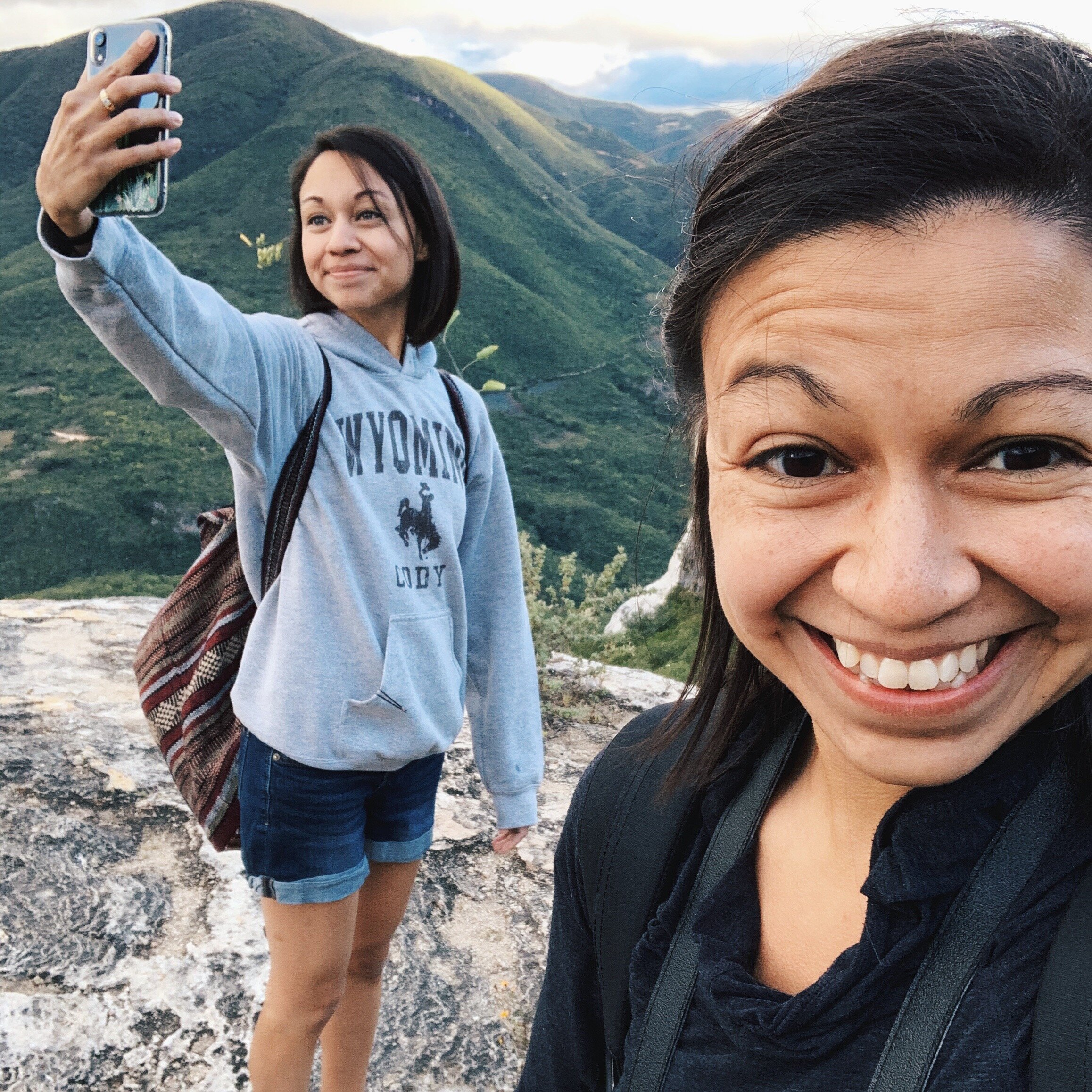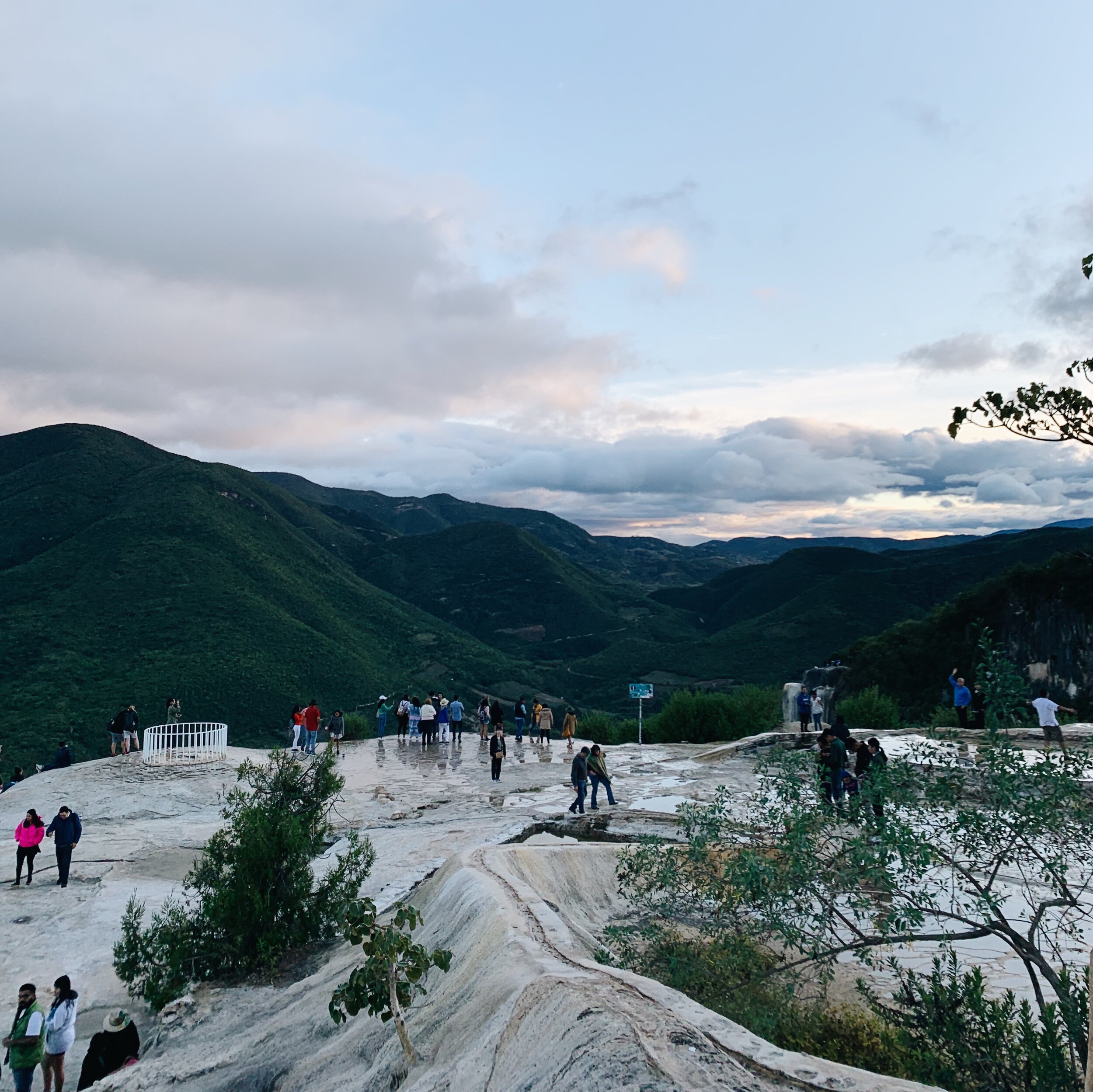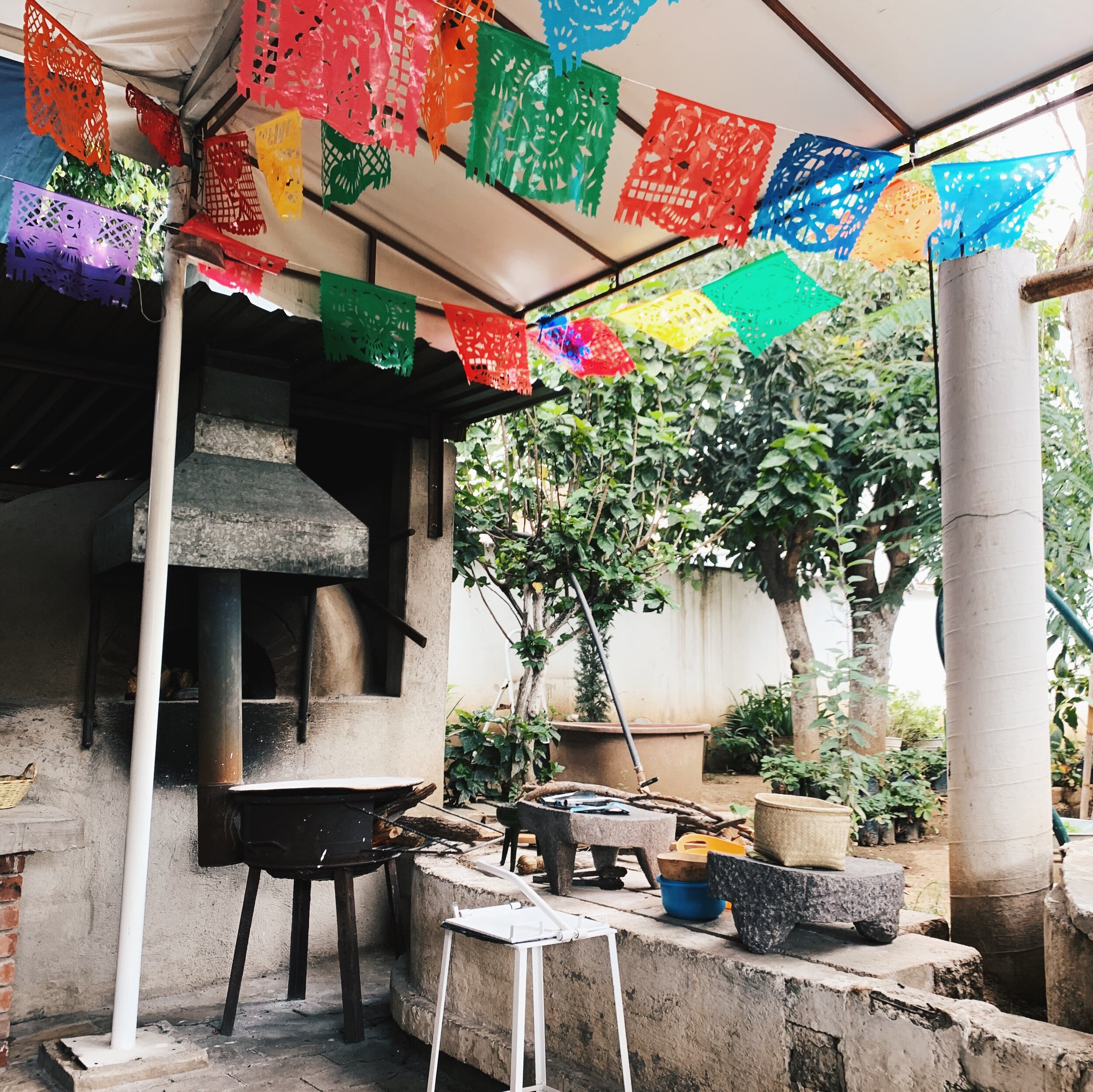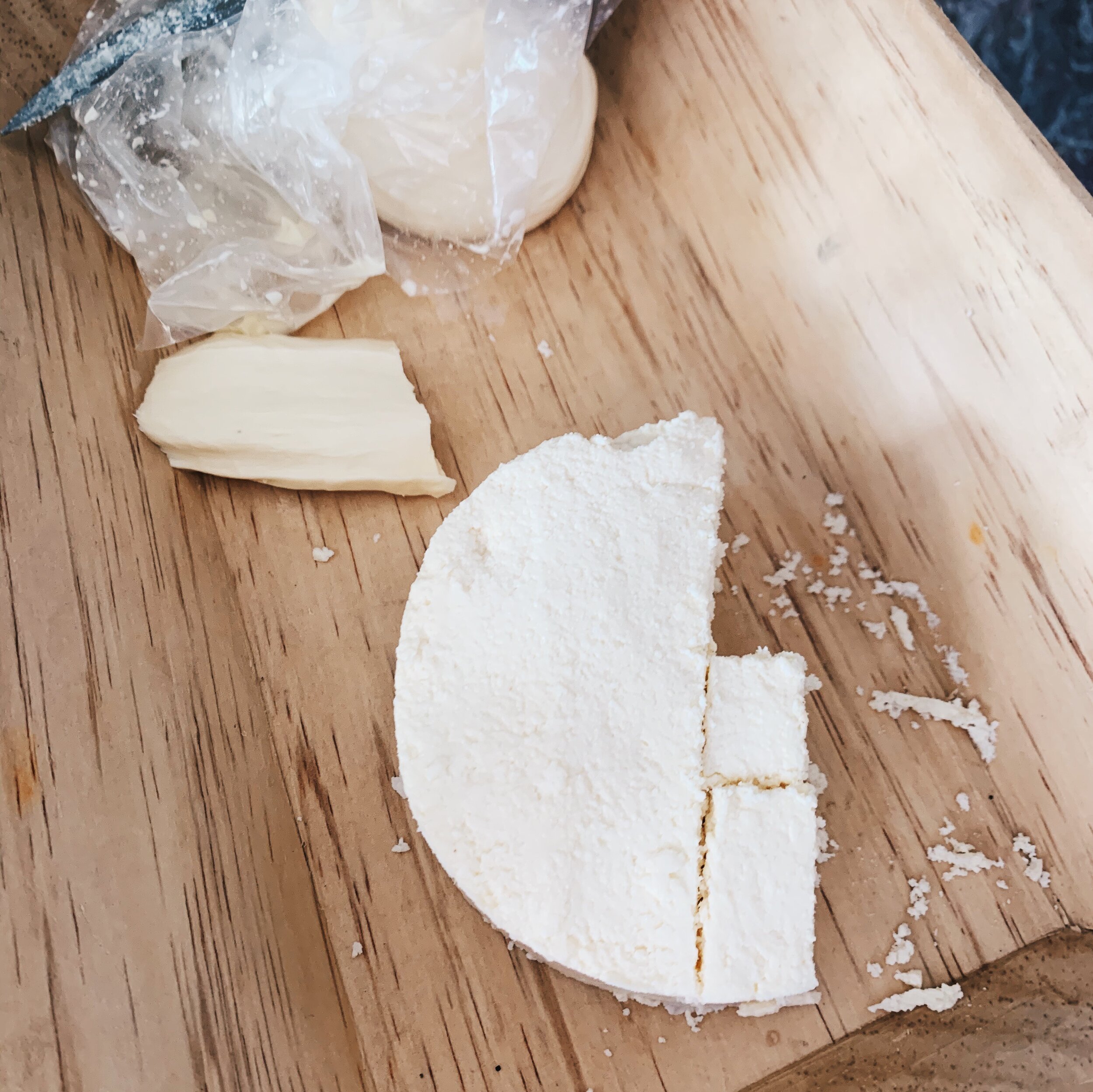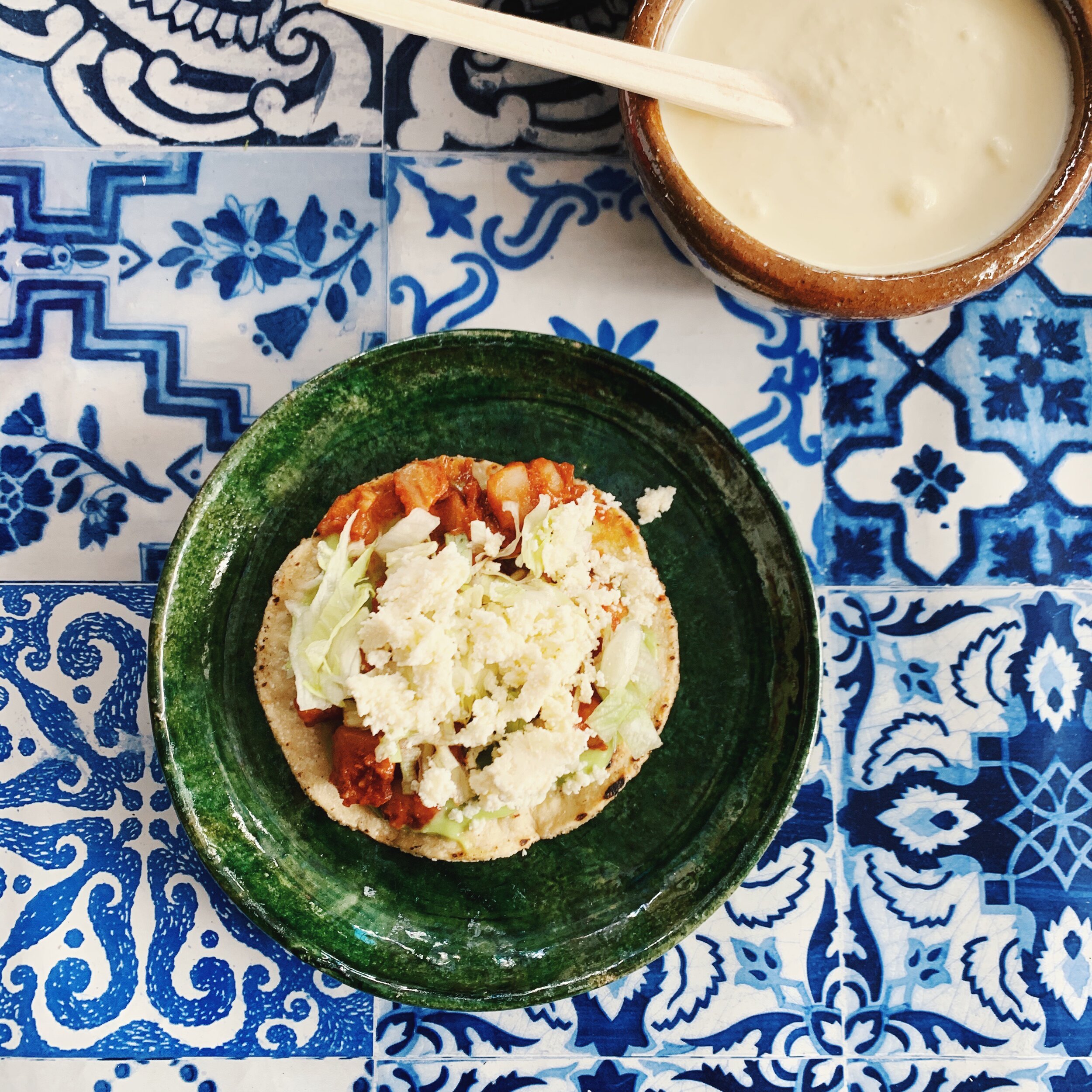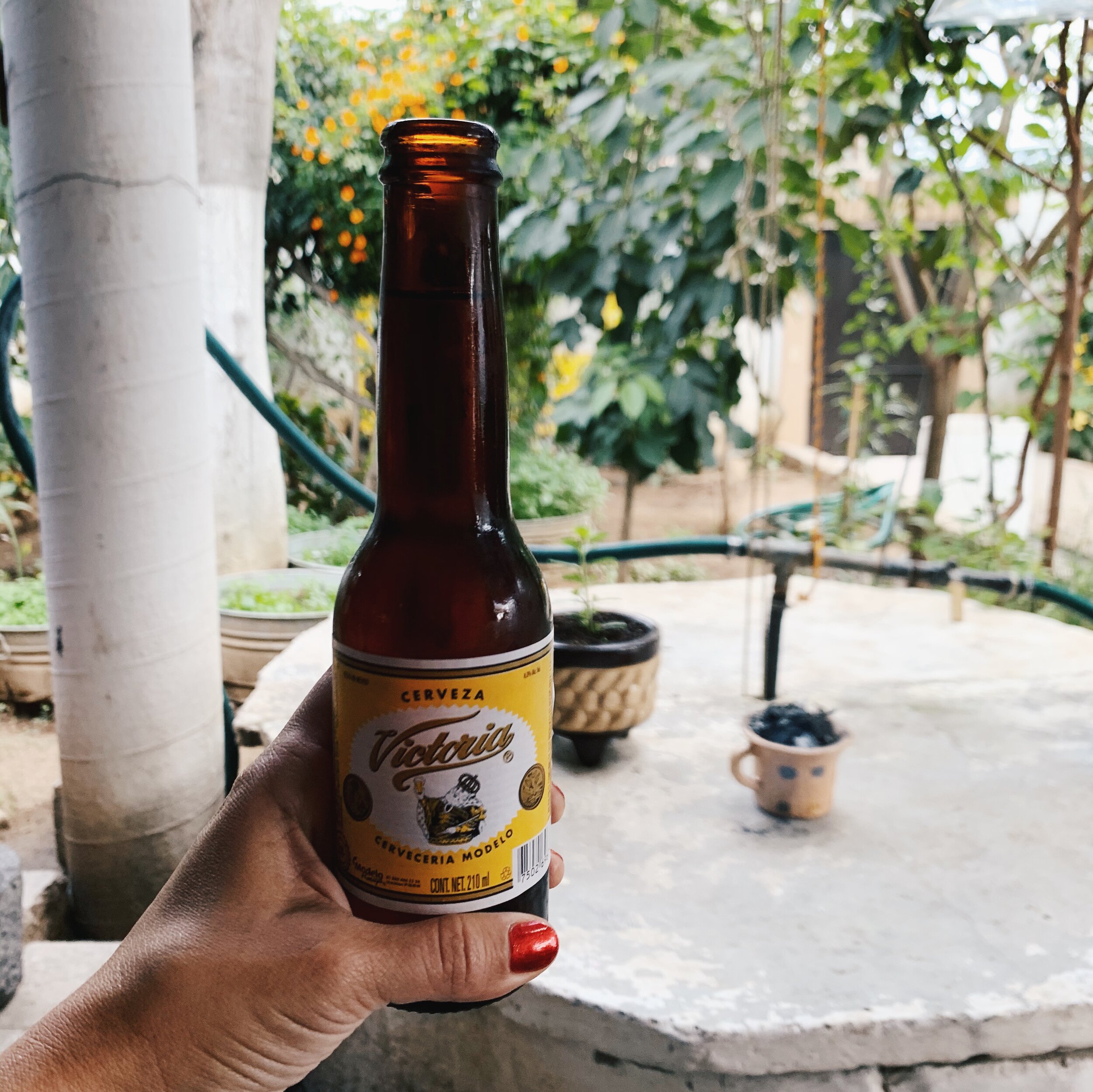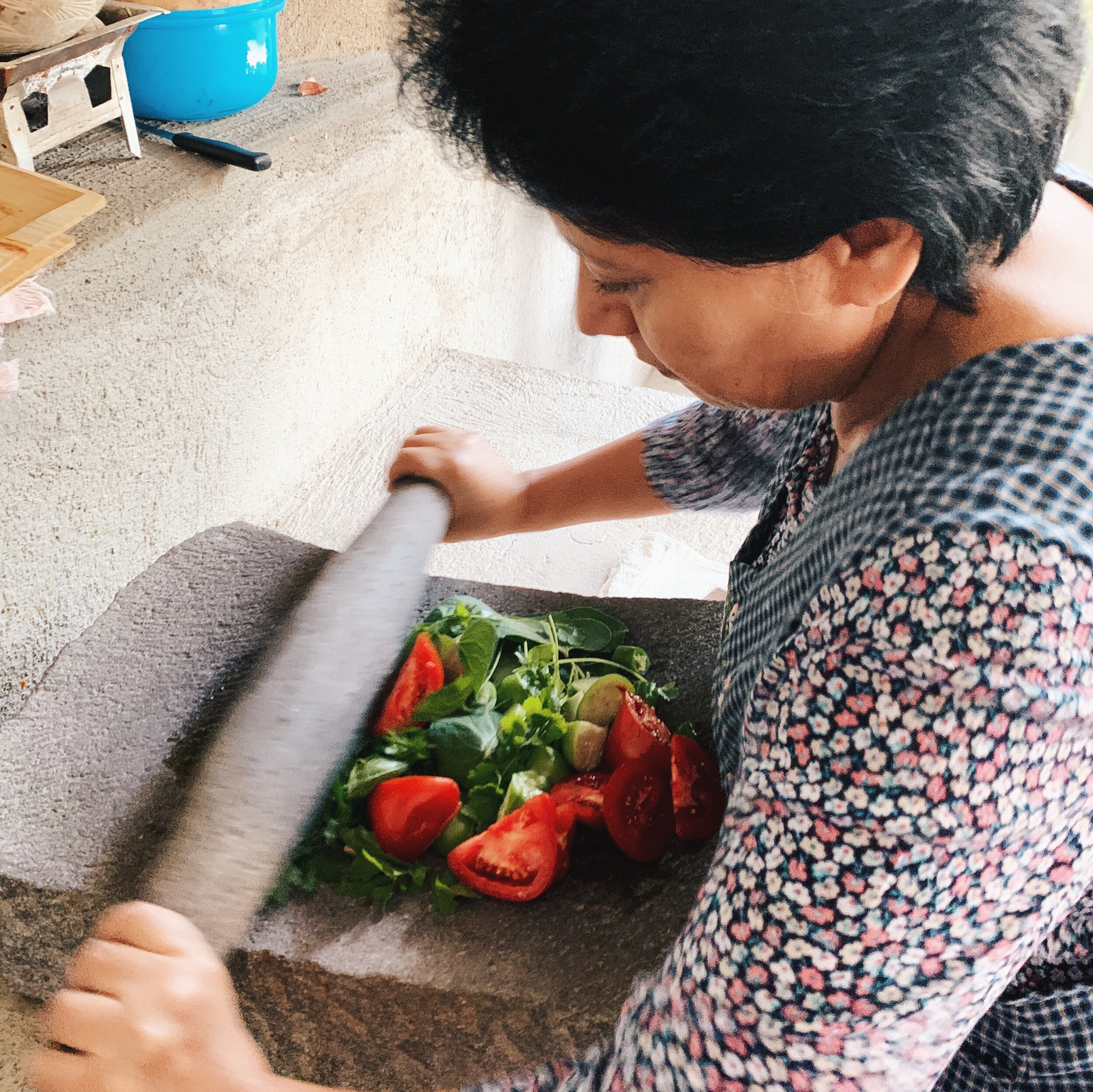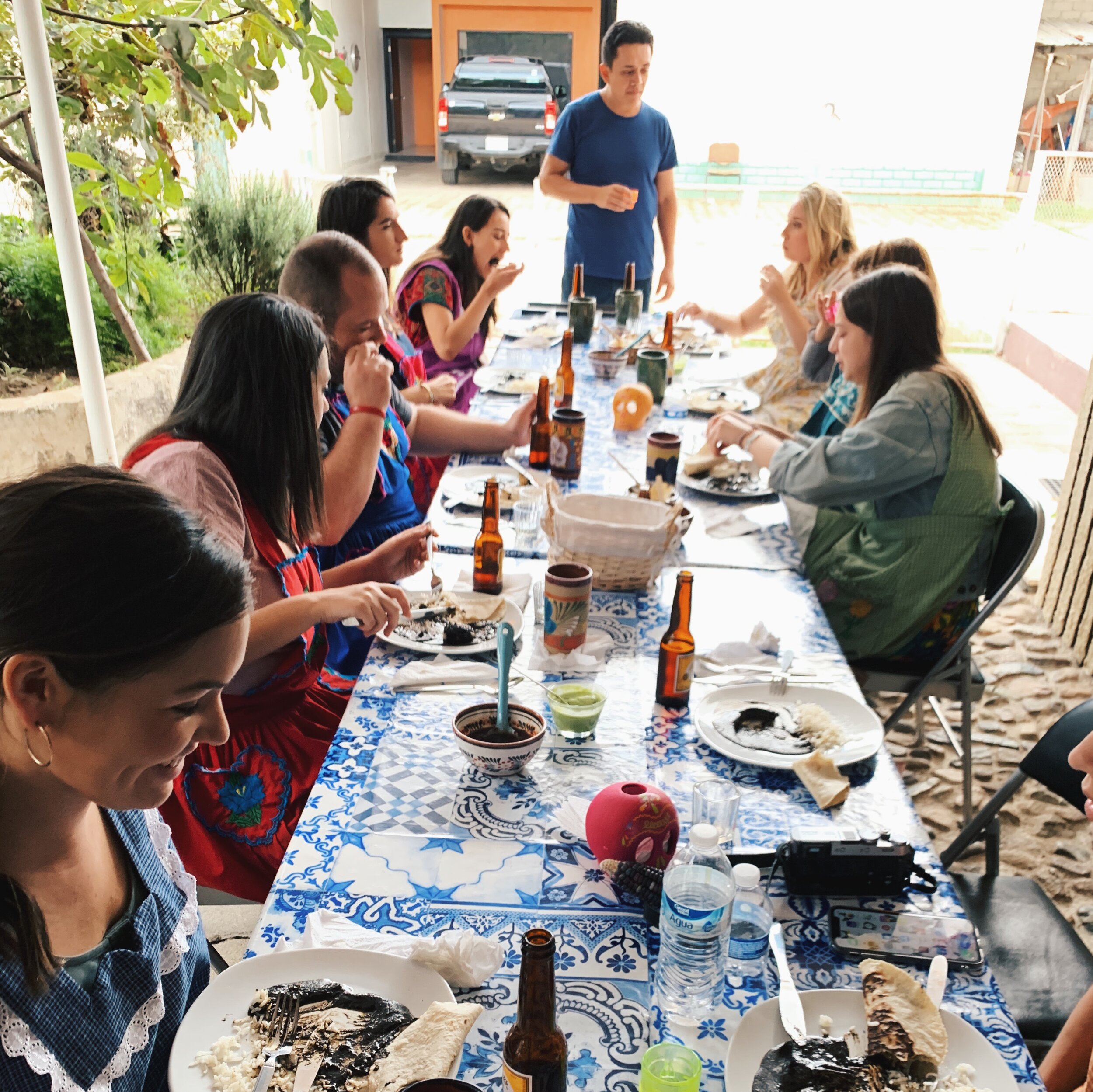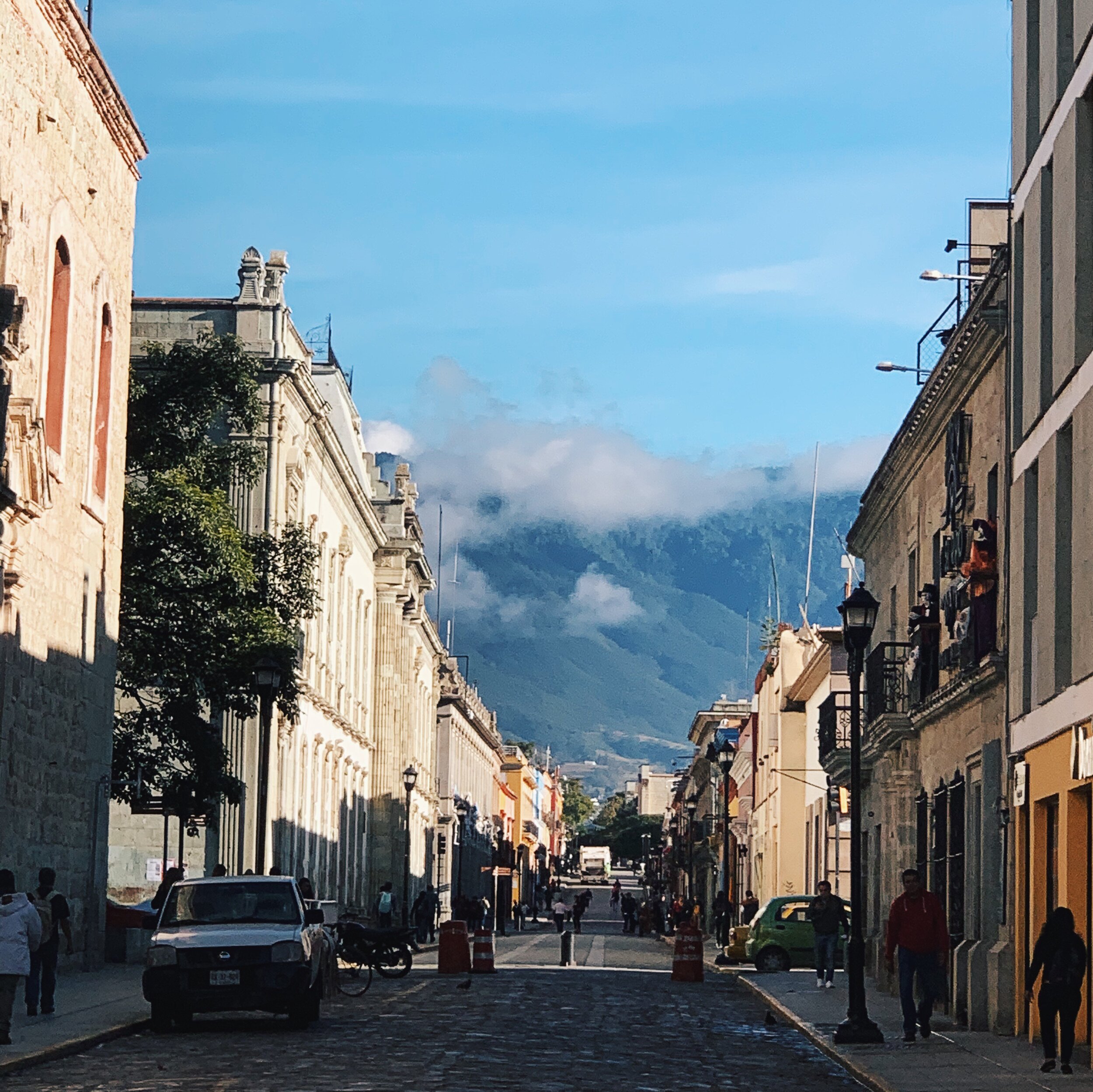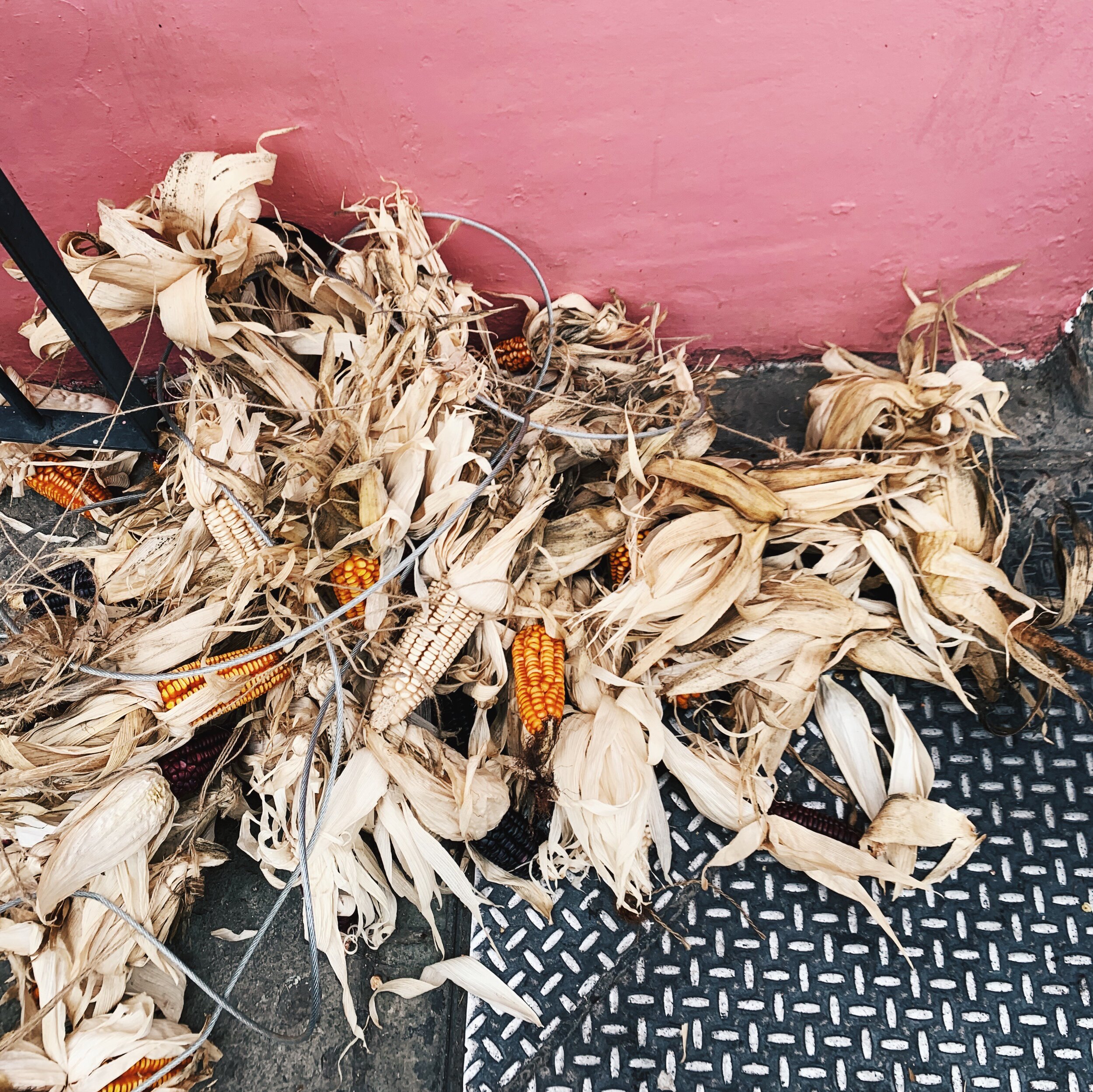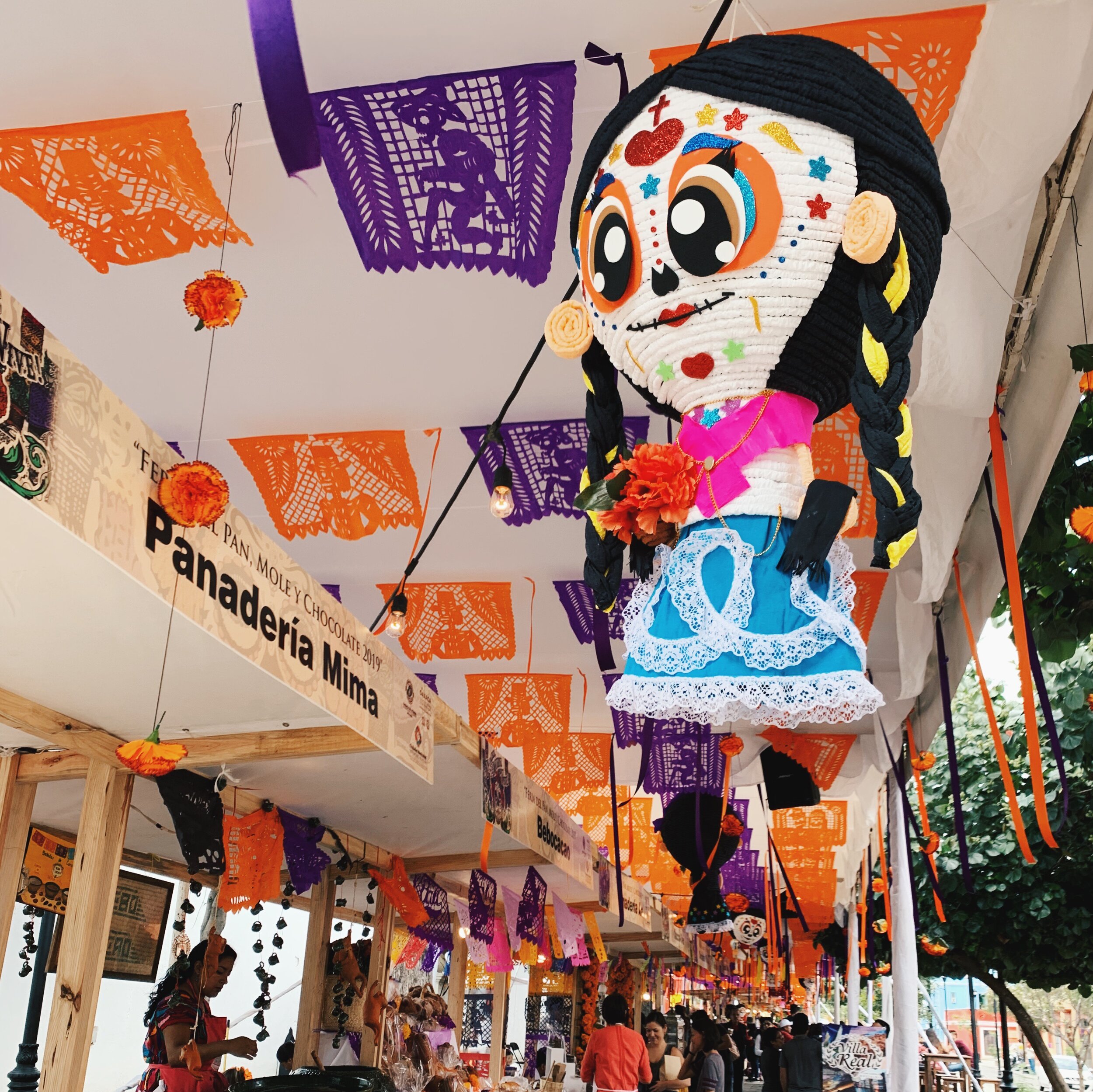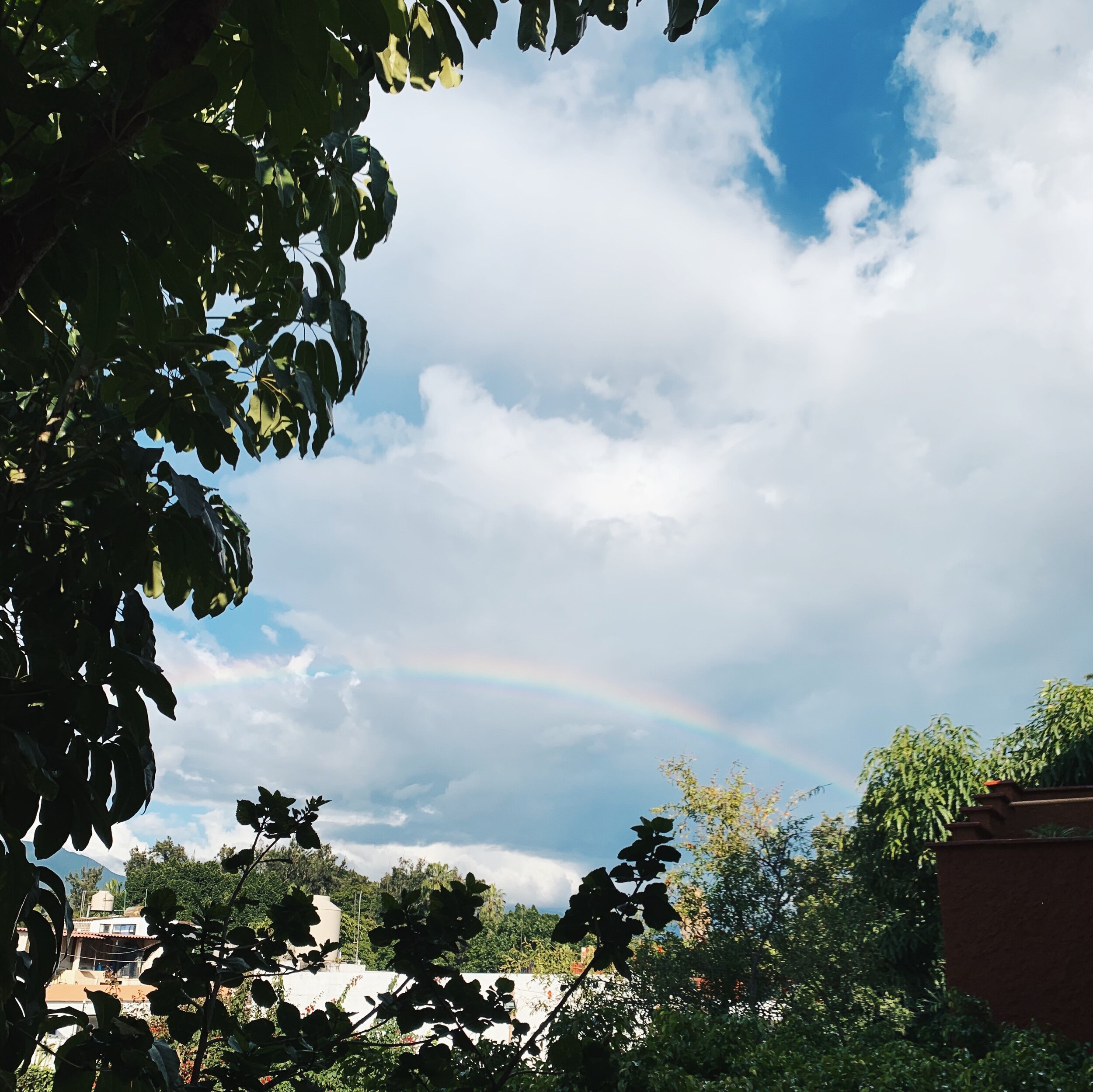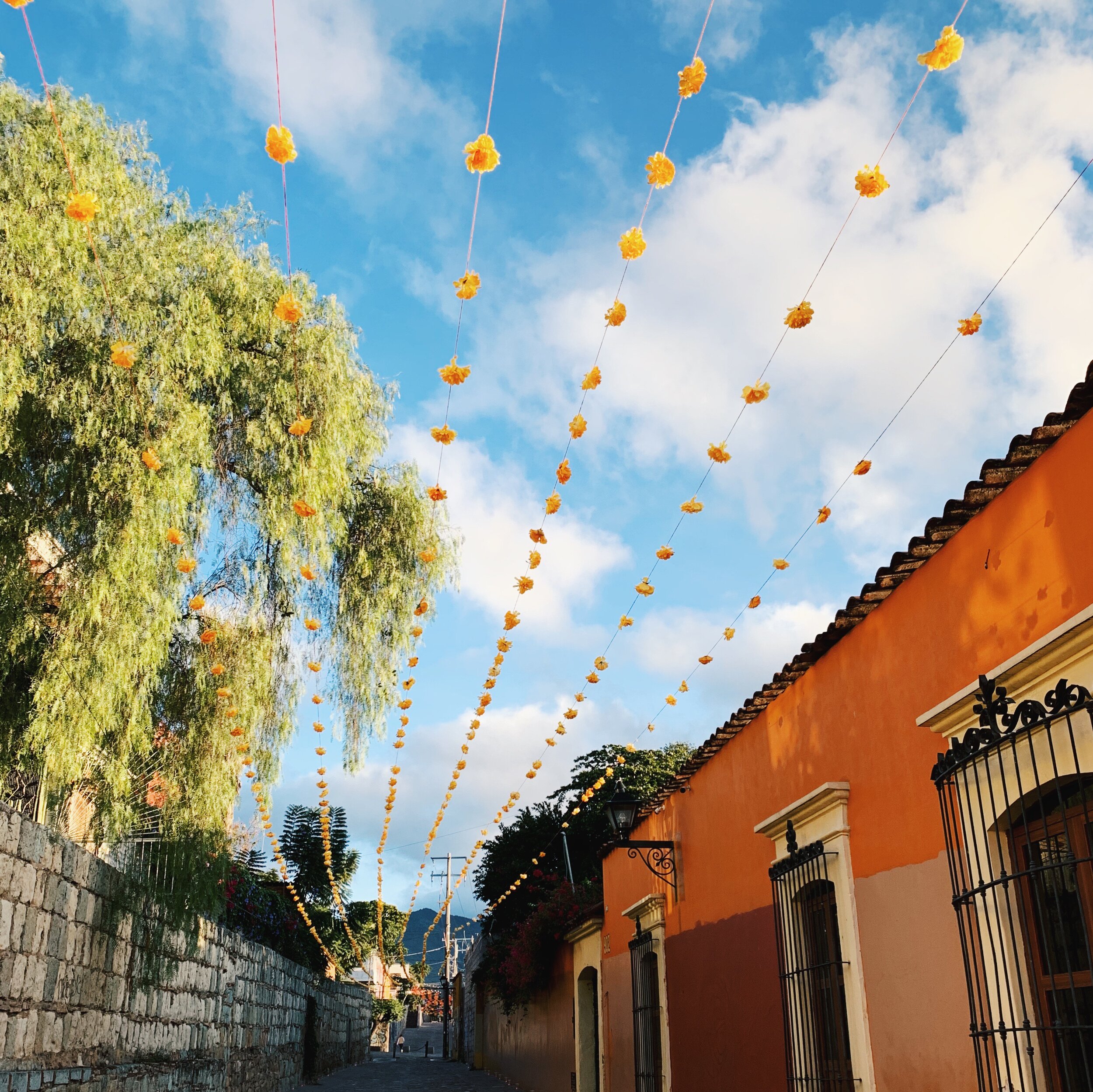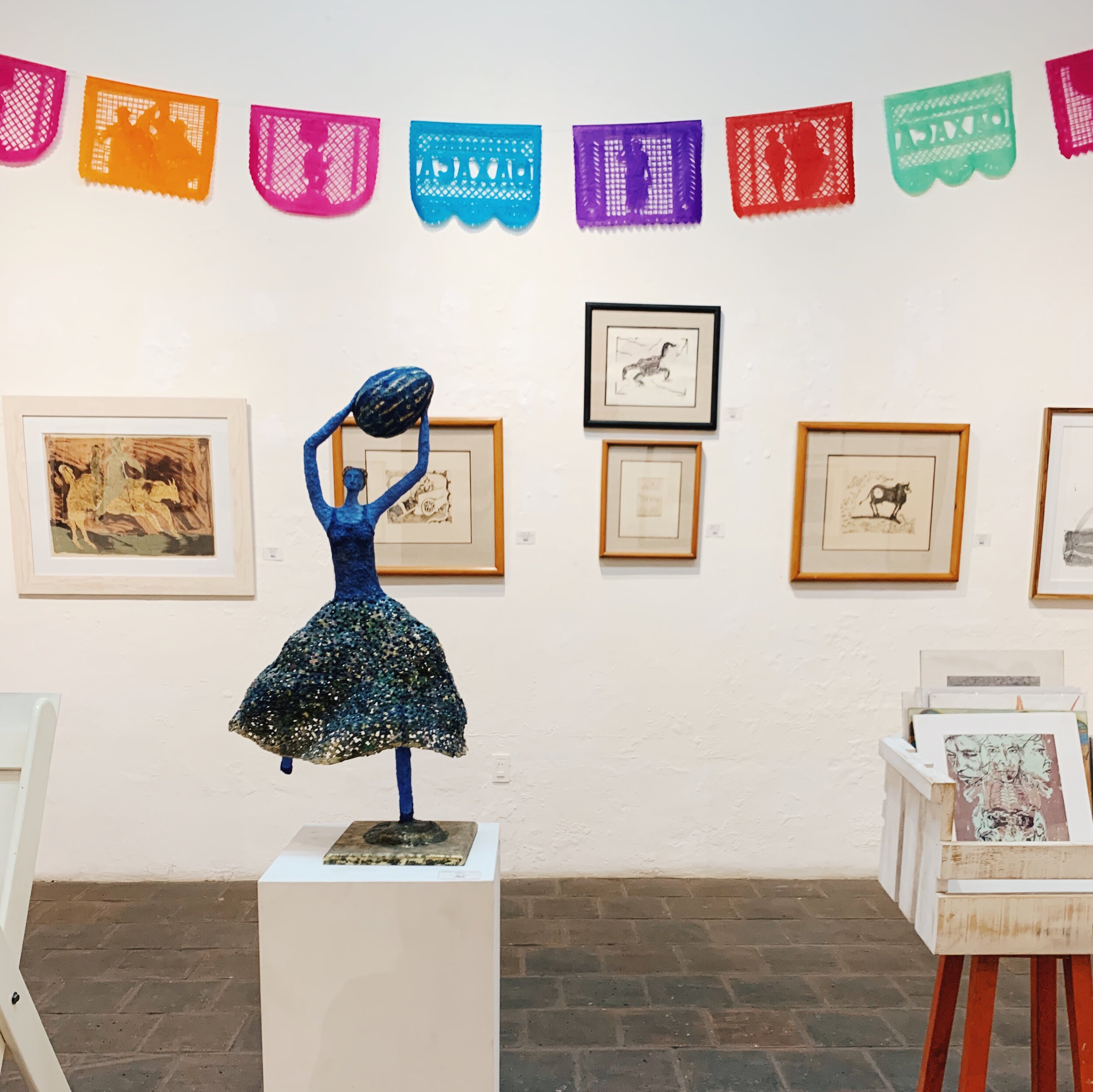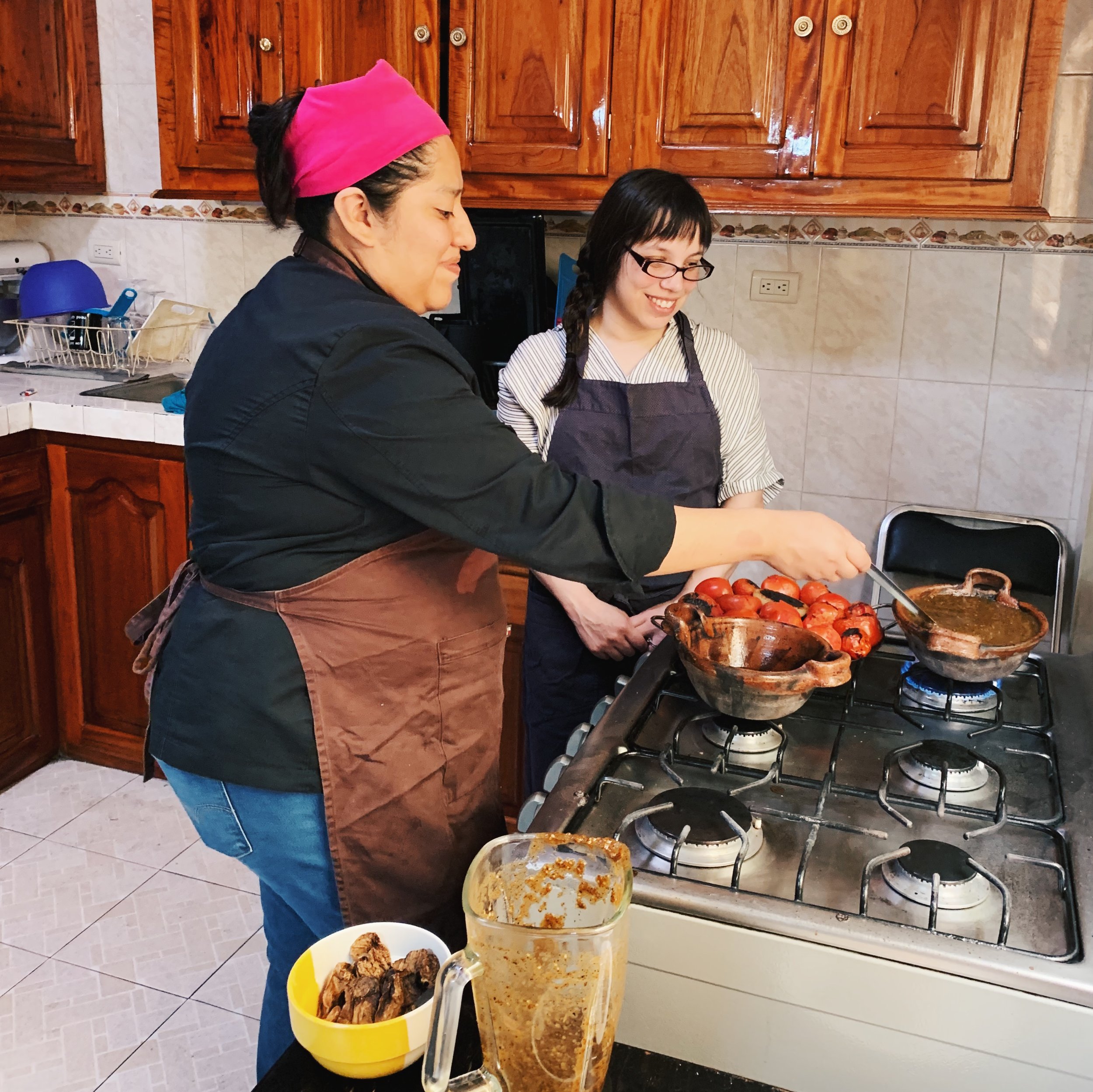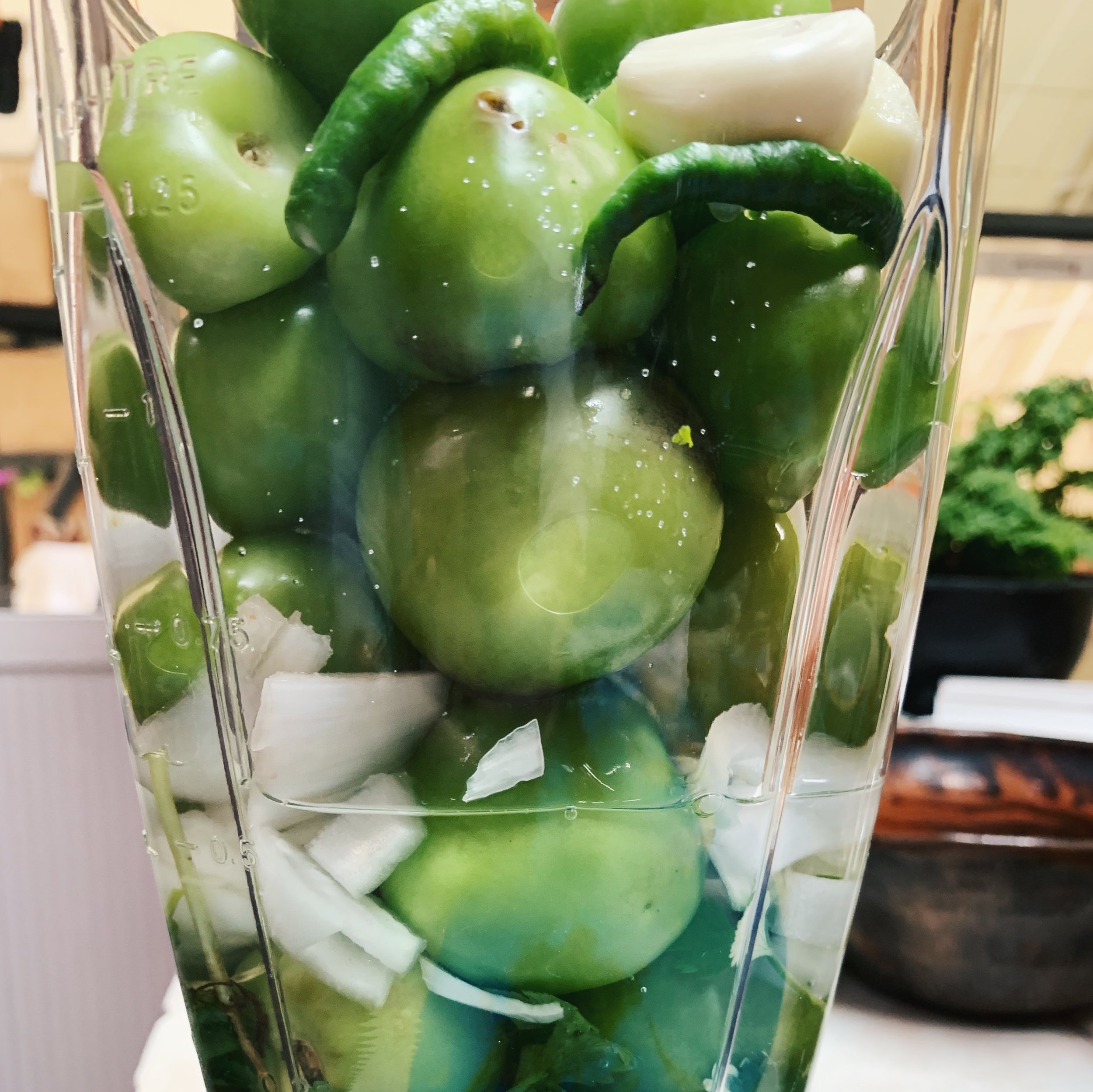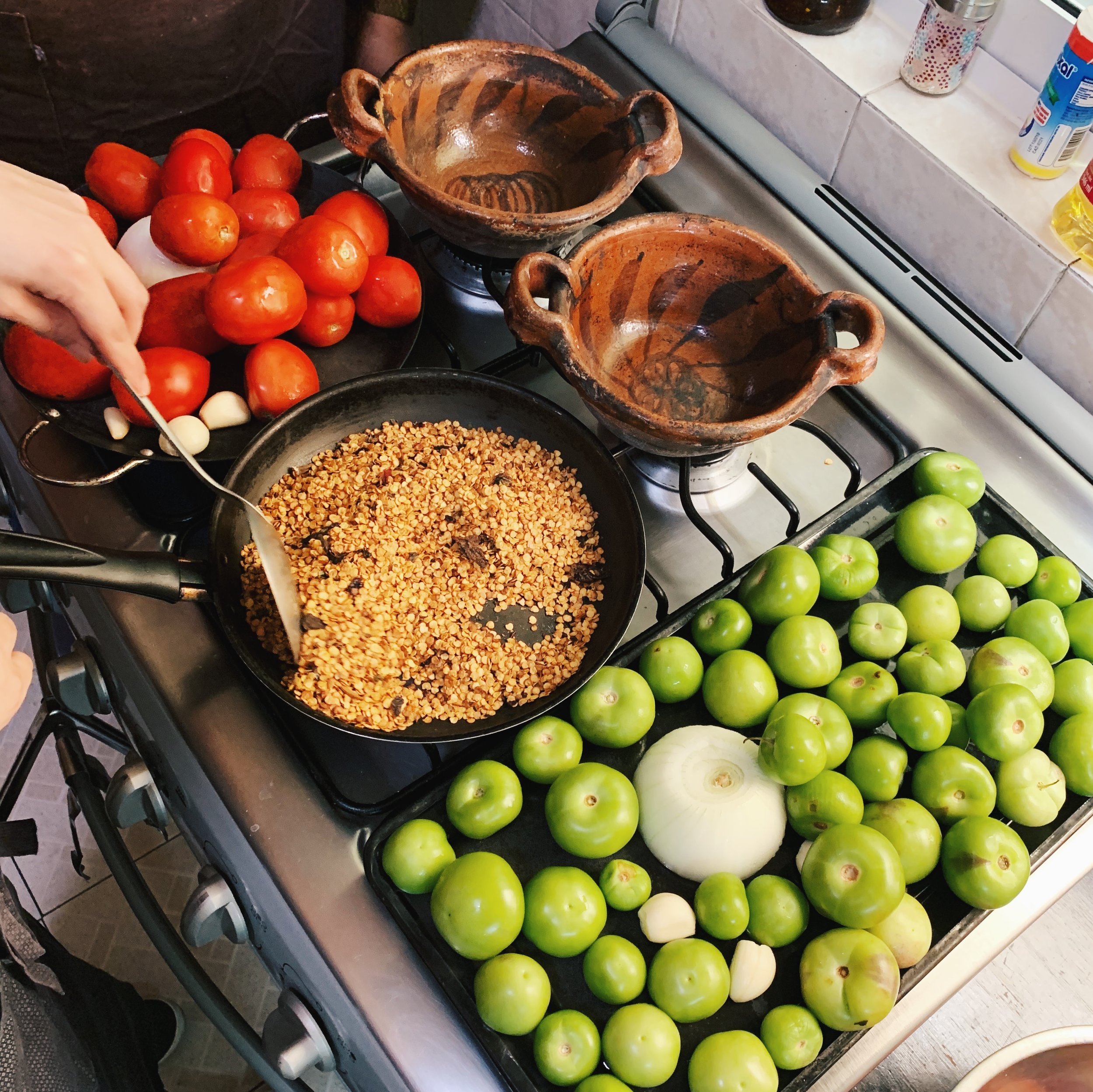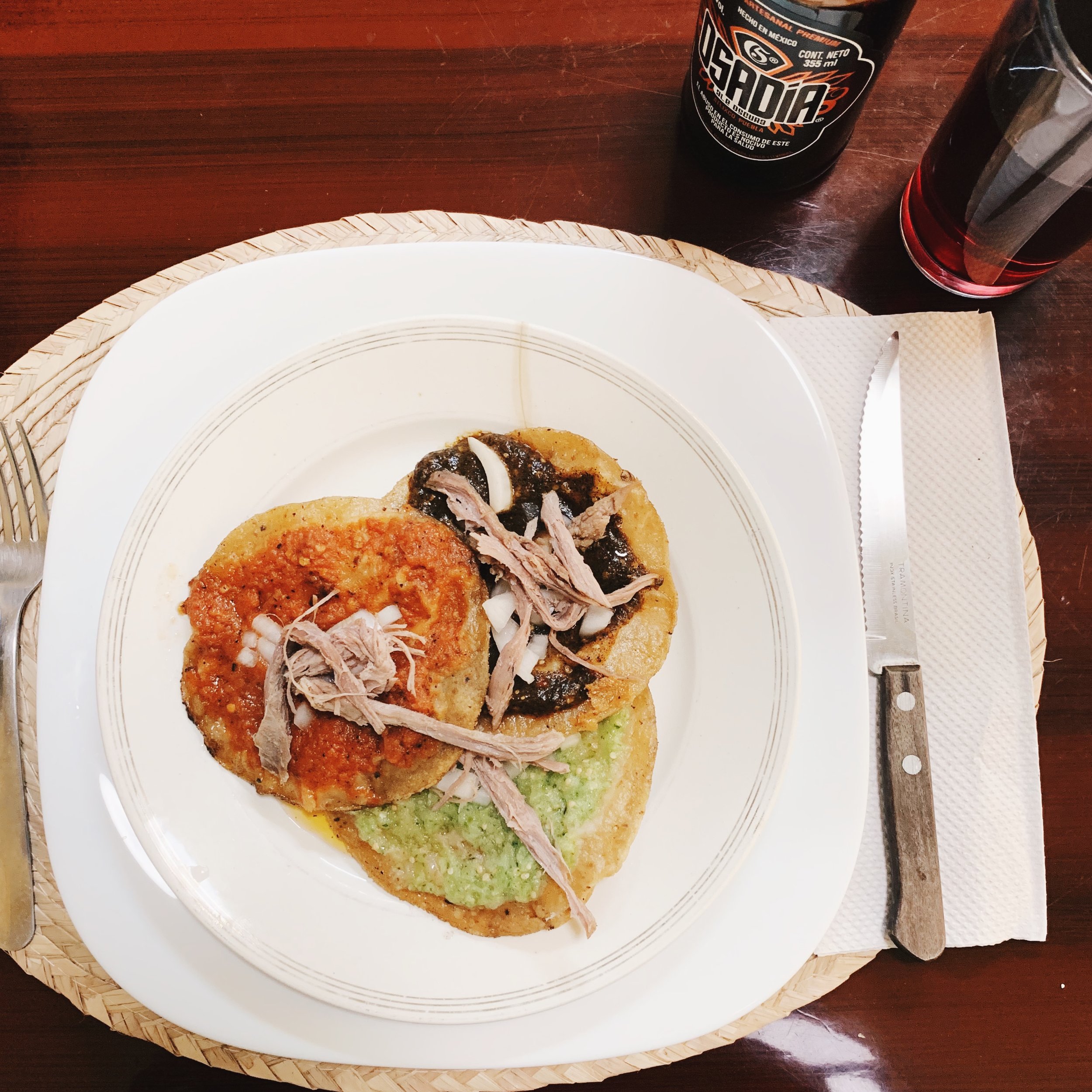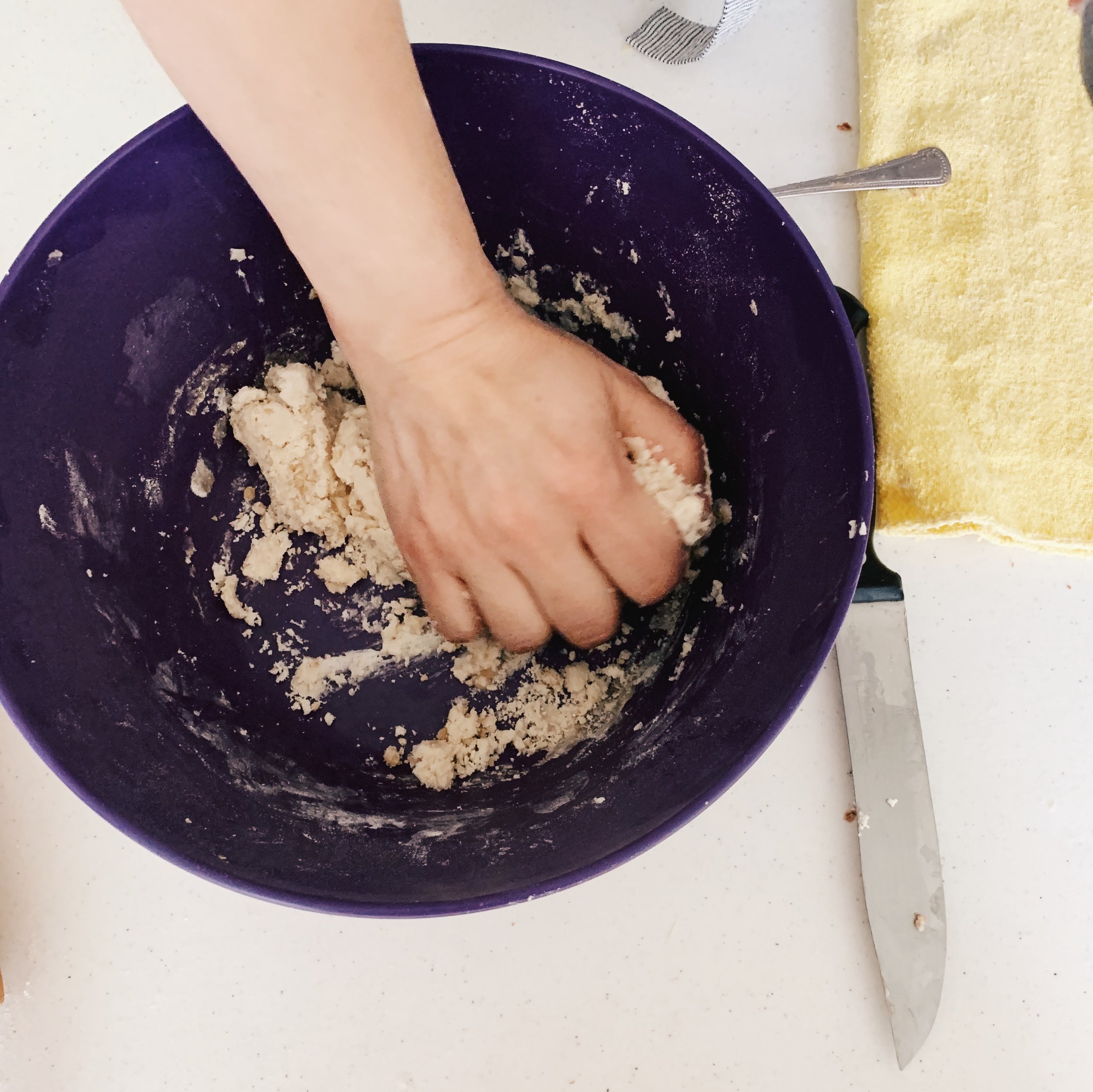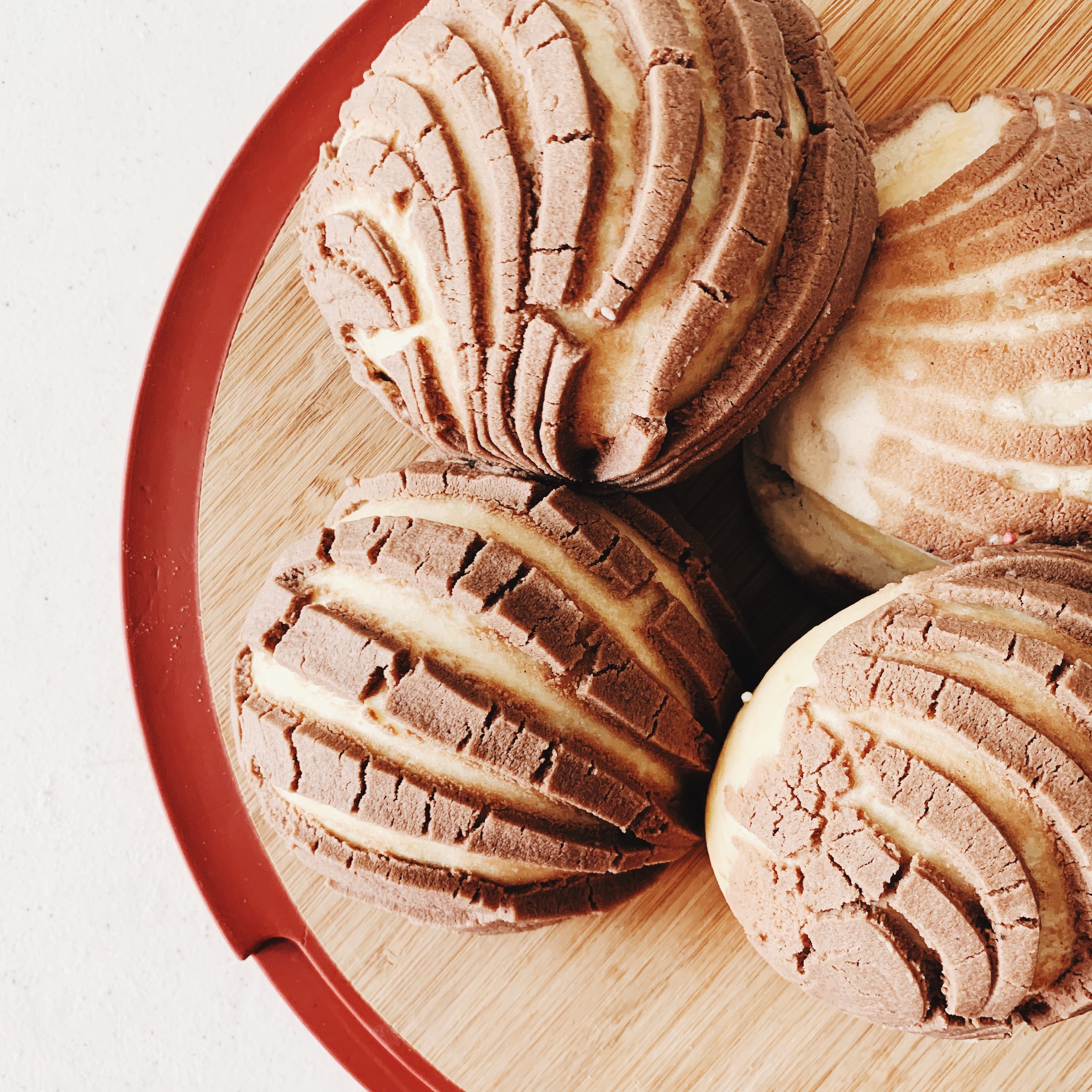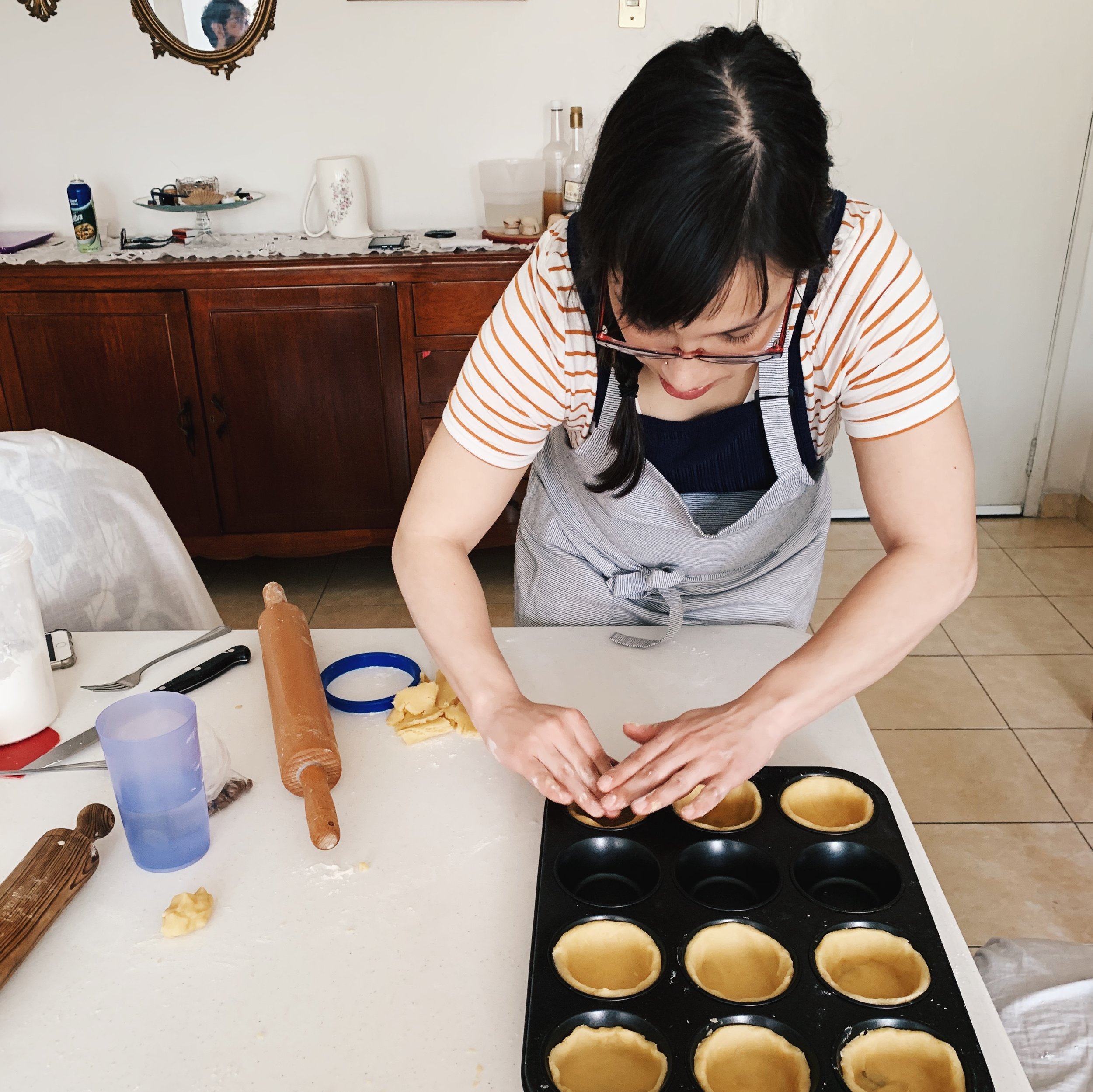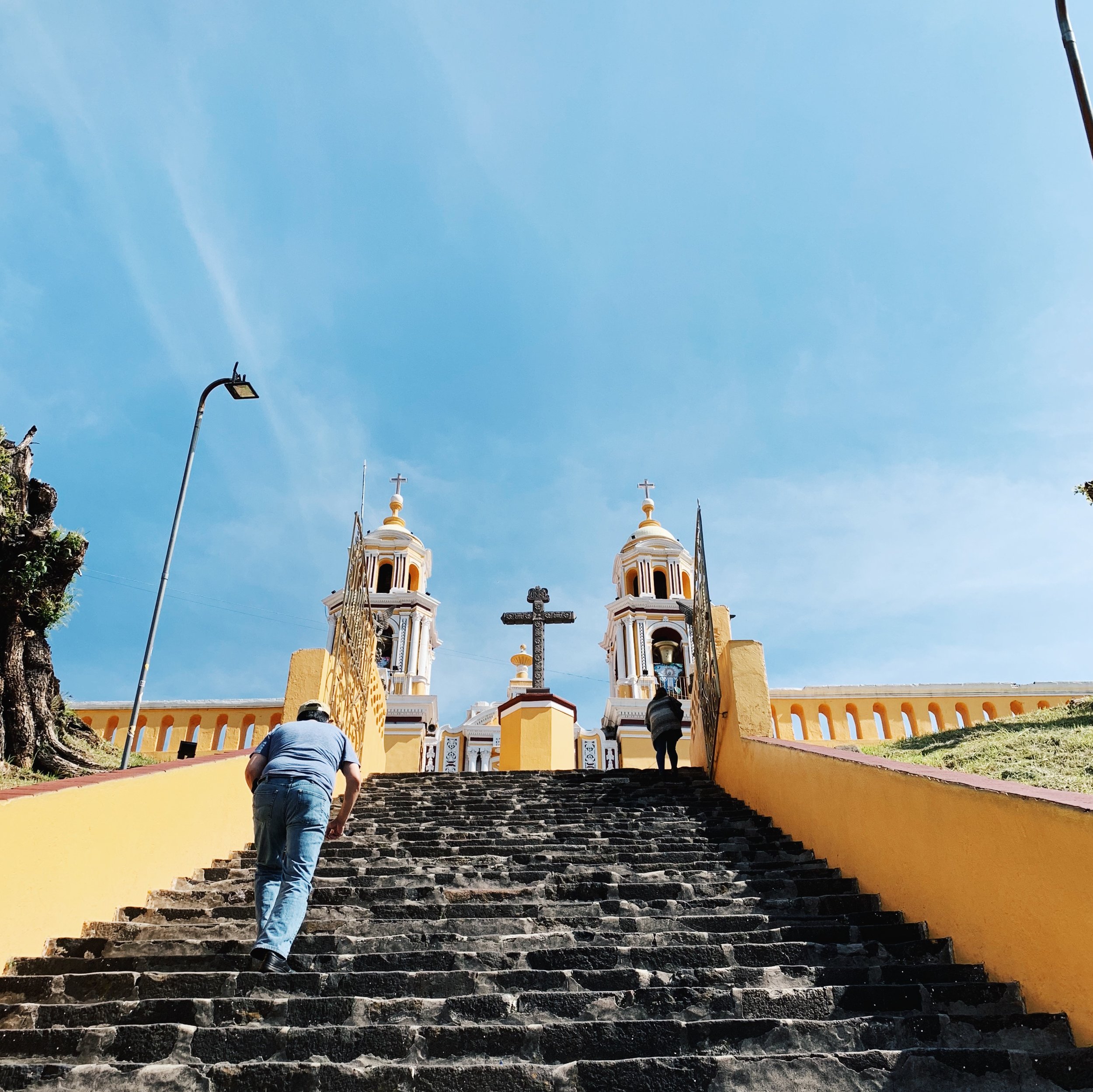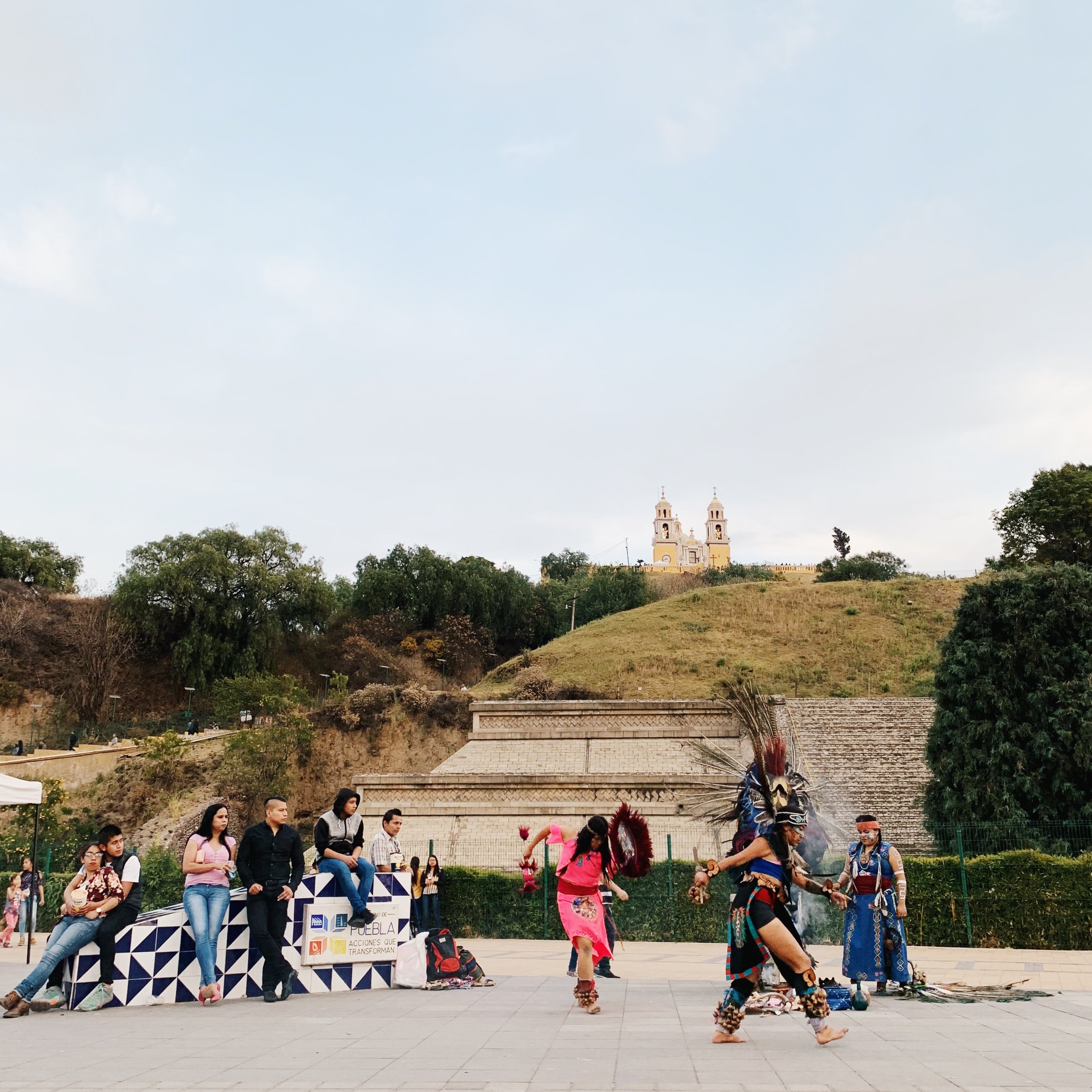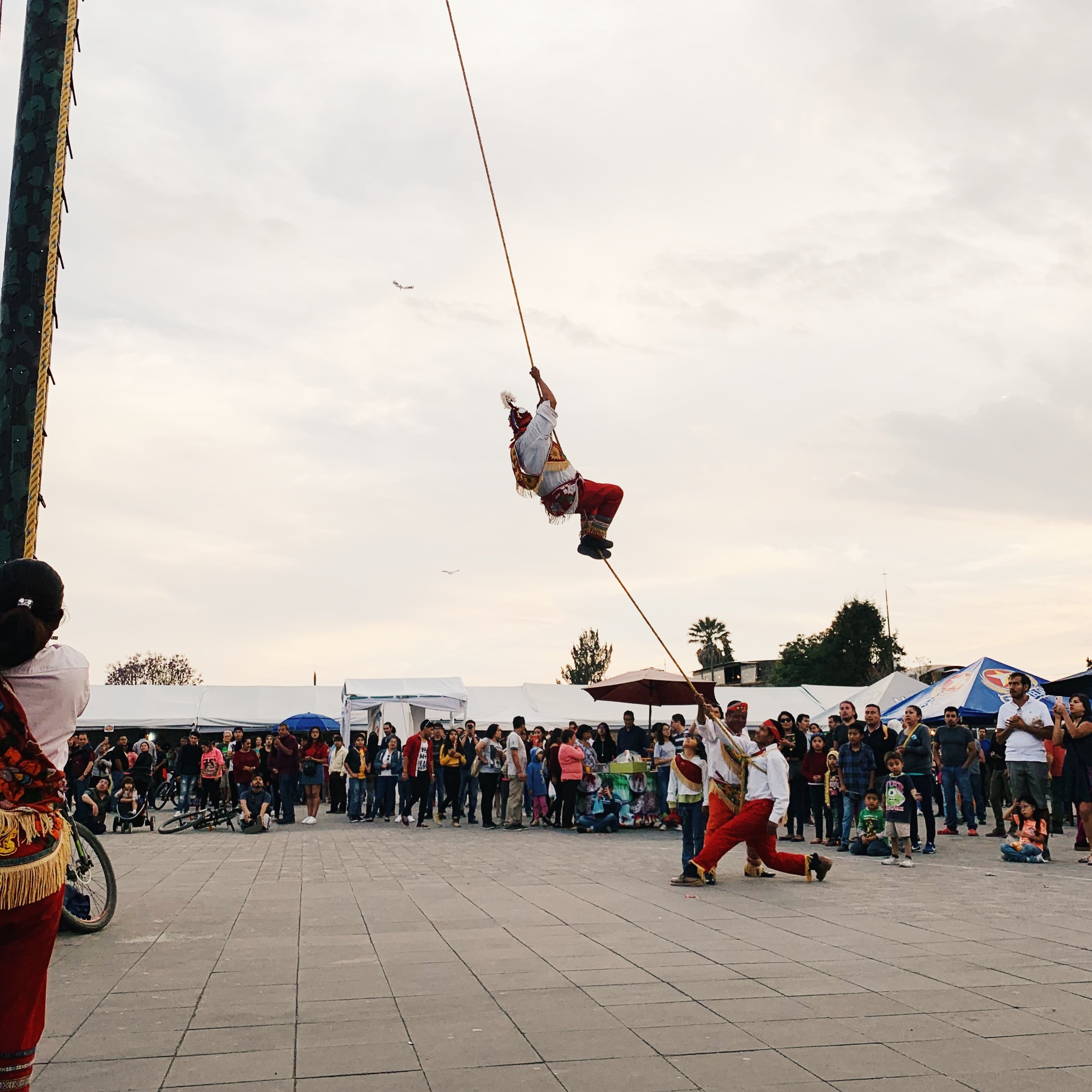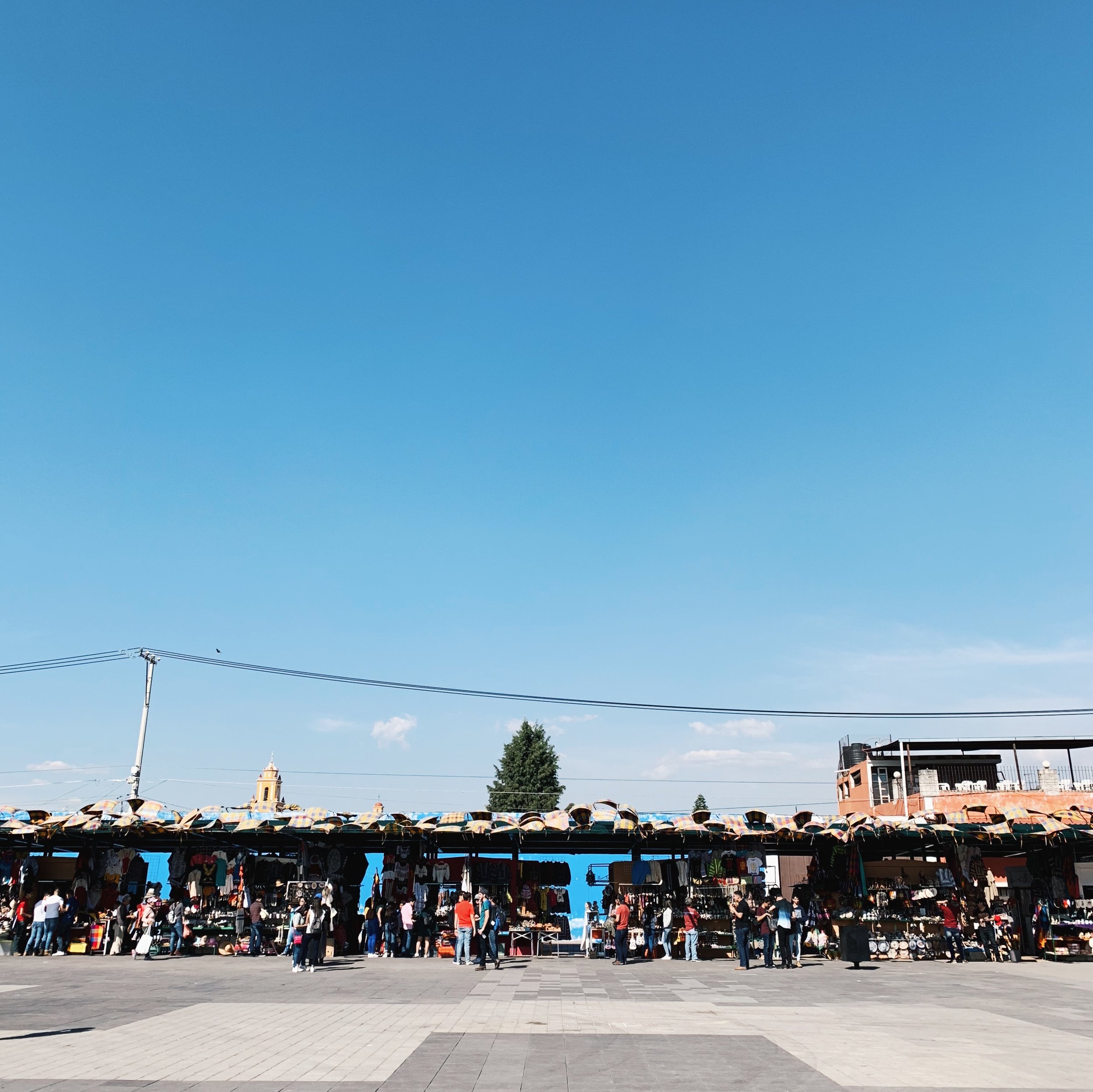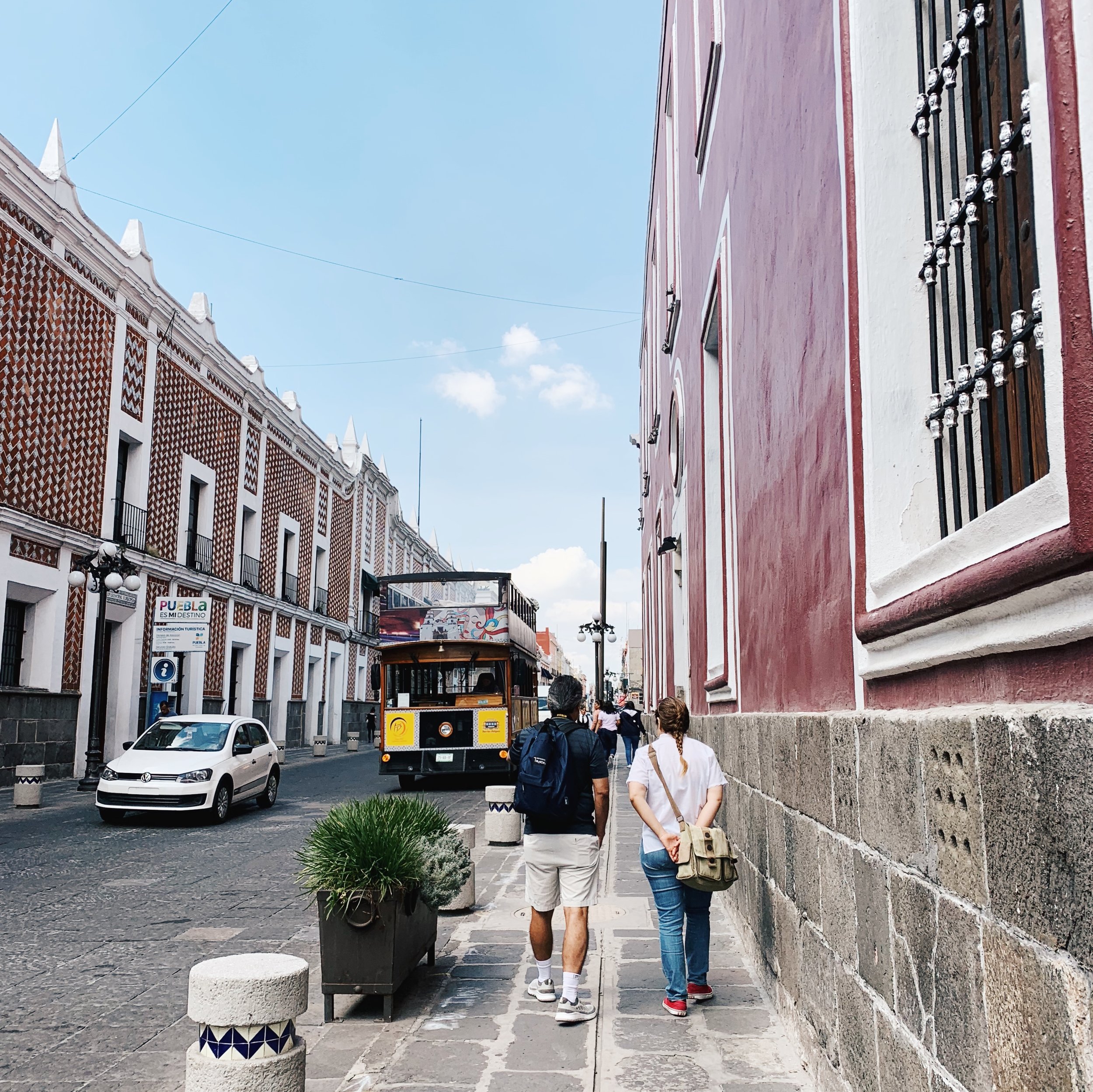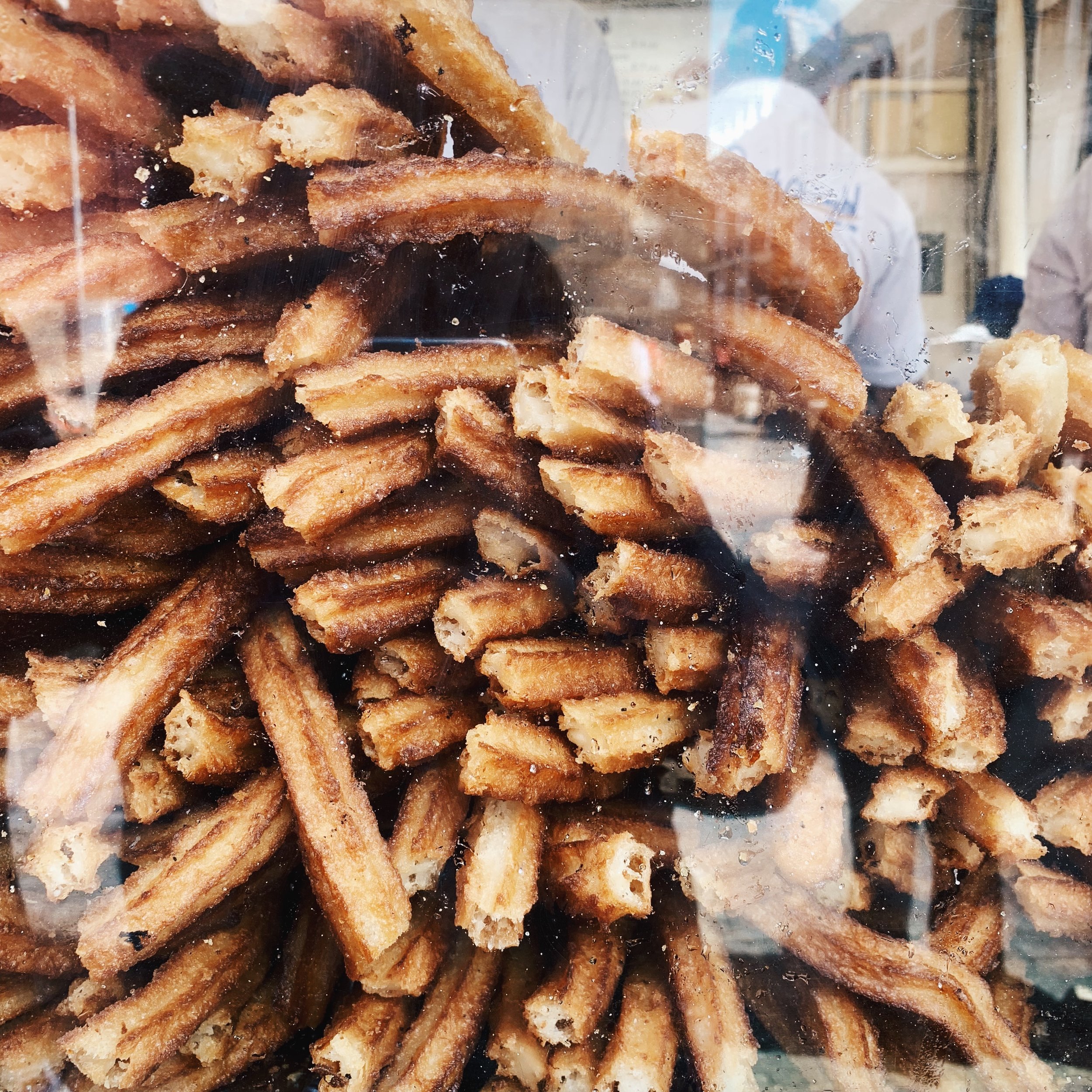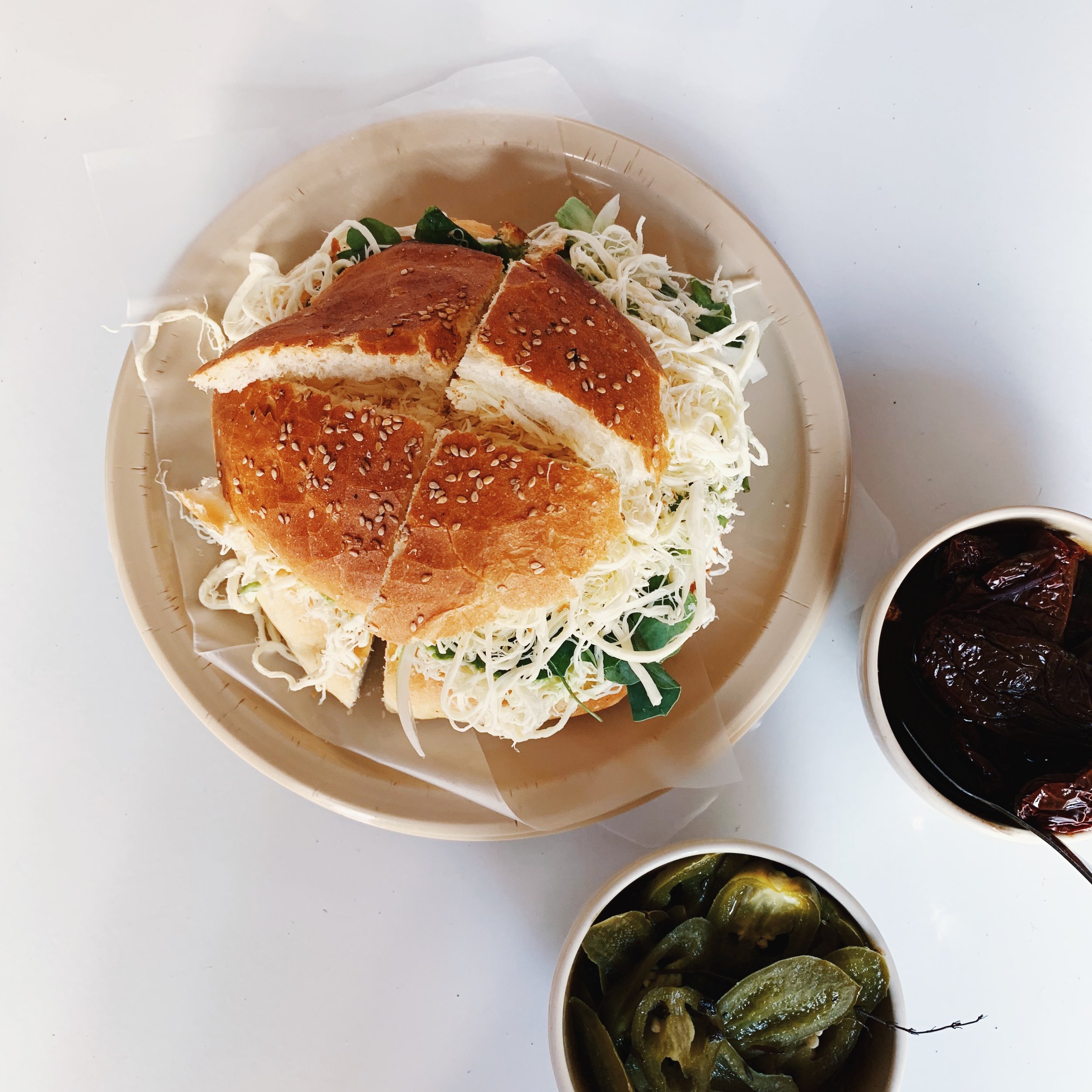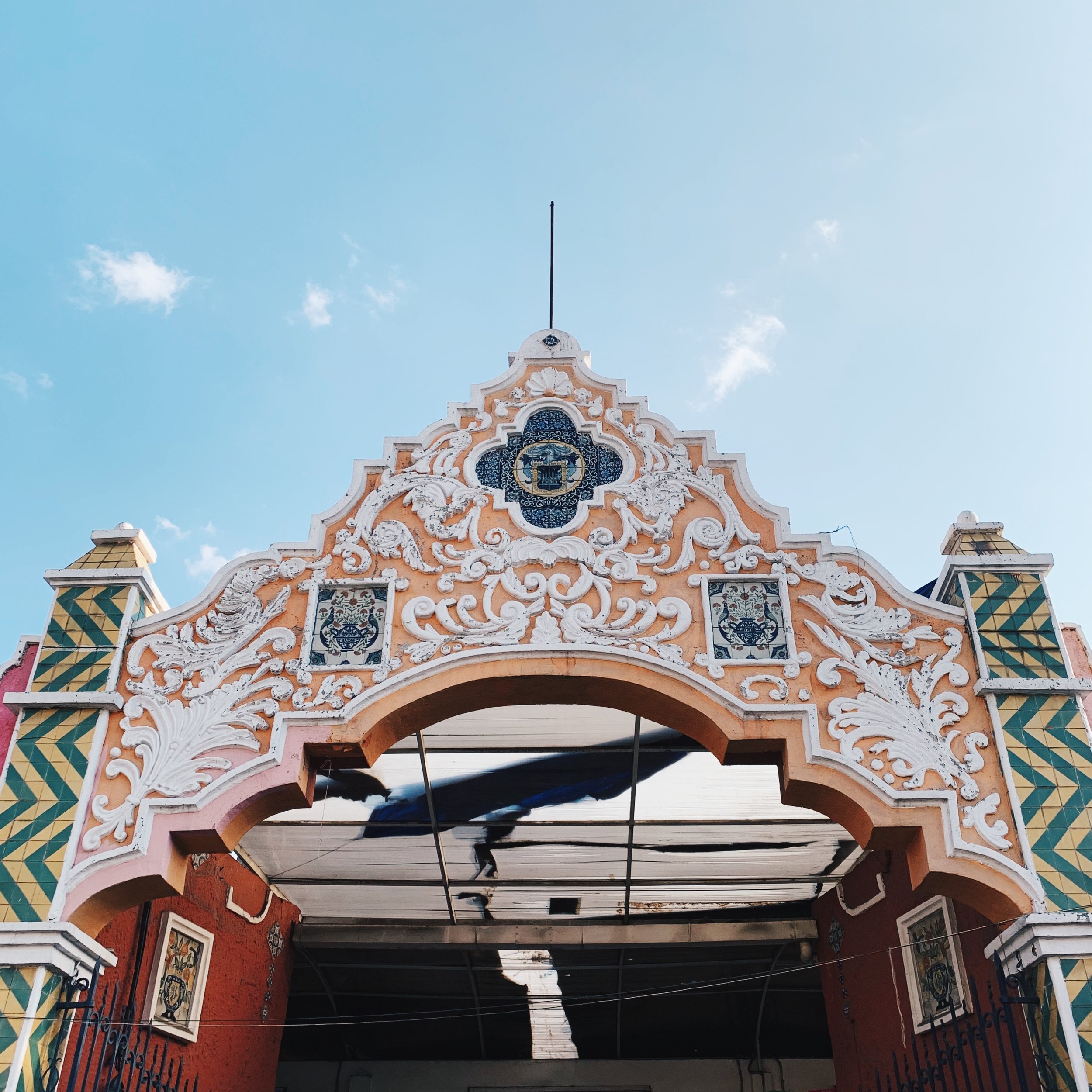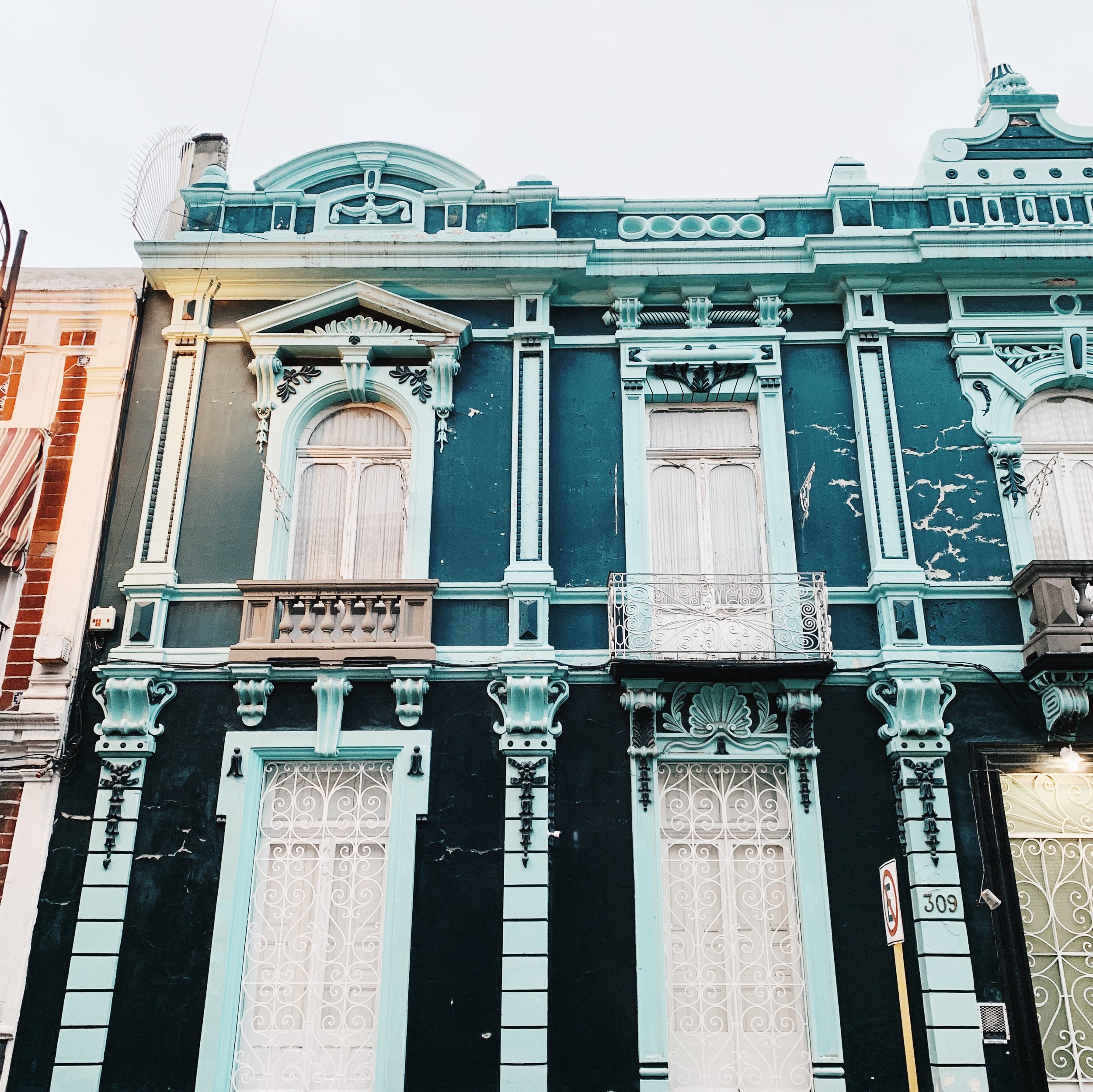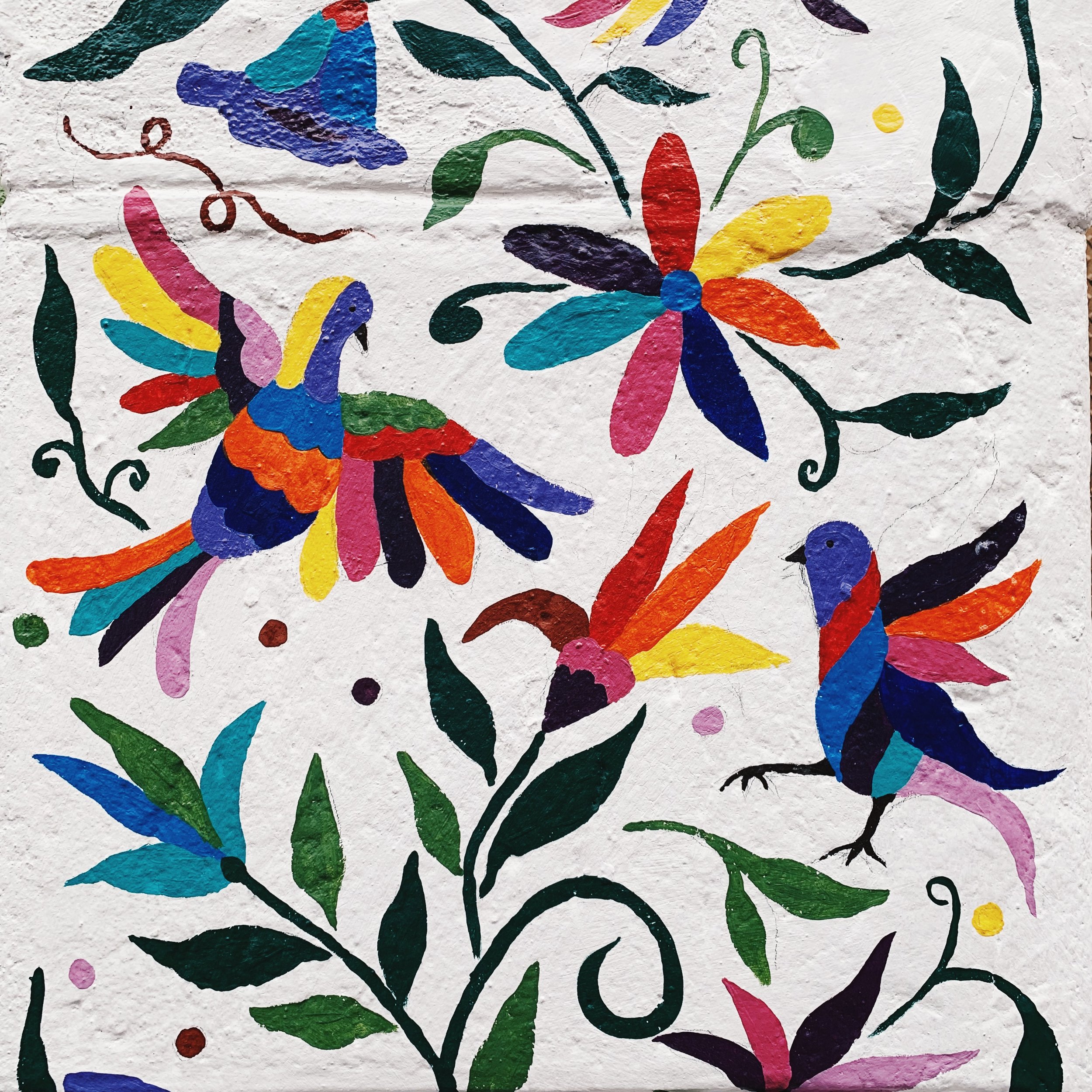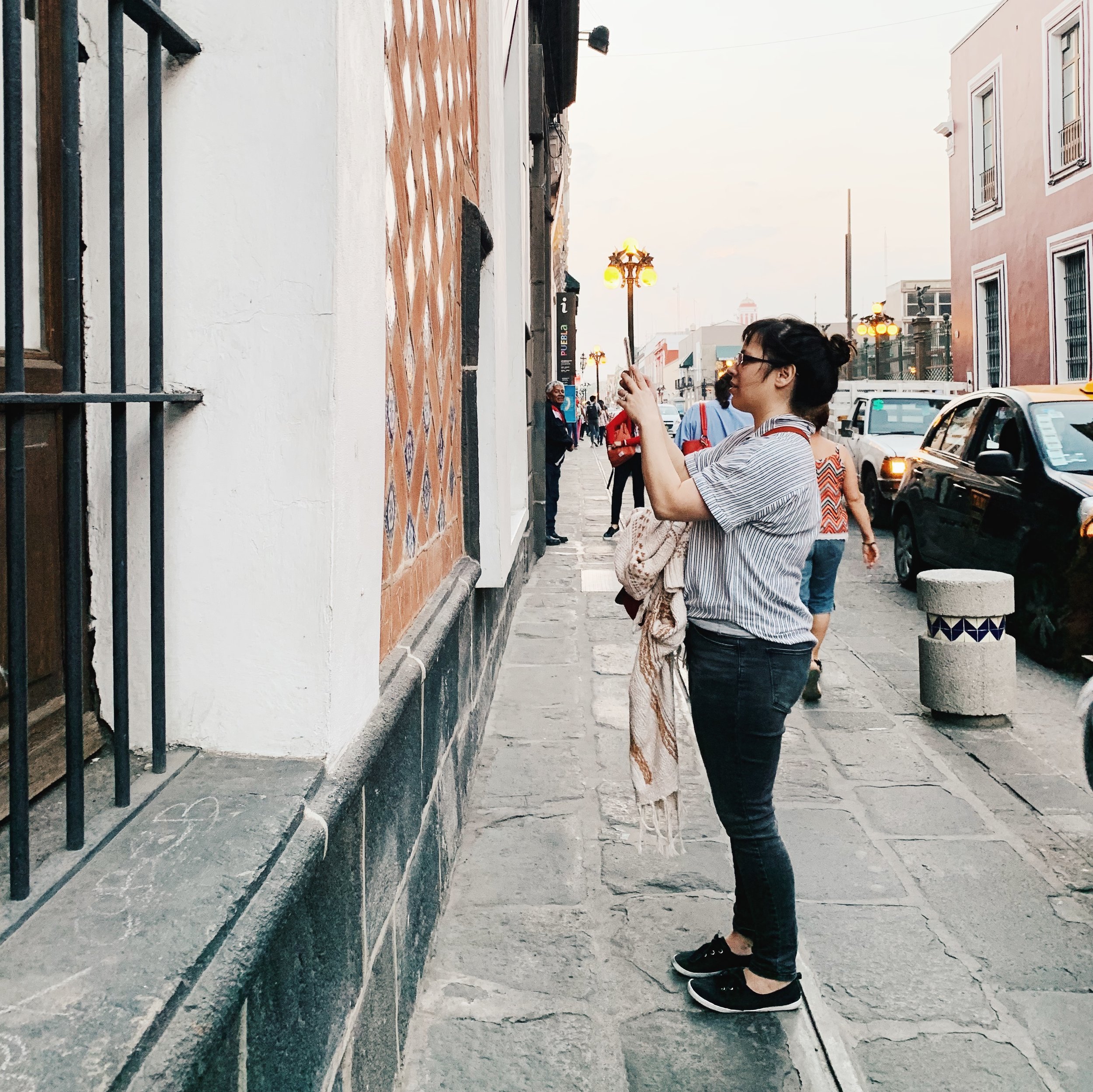My trip to Oaxaca, Mexico was amazing. Going over Dia de los Muertos was the perfect time to go. And going with my cousin and sister made it so fun. We had 4 full days in Mexico with two travel days going and coming back. Getting to Oaxaca takes about half a day. First we flew into Mexico City, which is about a 4 hour flight, and from there, flew to Oaxaca, which is a short flight, about an hour. (There are no direct flights to Oaxaca) We ended up arriving to our Airbnb at 11:00pm, so we all just crashed.
During our time we had our fill of good coffee, amazing food, and lots of mezcal. Pretty much how a trip to Oaxaca should be. There’s so much to share, that I decided to break up this post into two. In this first part, I’ll share about what we did, and in the second part I’ll share all about the food we ate.
Stay:
Since we were going during Dia de los Muertos weekend, finding a place to stay wasn’t easy. A lot of places were already full, or really expensive. We wanted to stay in the city so we could walk around during the day easily and not have to worry about taking a taxi in every day. We ended up staying at Parador Santo Domingo de Guzman. We had a little apartment with a kitchen, living room, bedroom, and bathroom. It was a great space, and they were so nice to work with. There was a pool area, but honestly it was a little too chilly to go for a swim. Plus we kept ourselves busy most of the time. I would definitely recommend staying here. I was able to get up each morning and go for a jog and take pictures. Right outside the apartments was a little mercado set up where people were selling candies, chocolates, and breads. It was only a few blocks from the center of the city so it was far enough from the festivities, but close enough to get to the main streets and restaurants.
Activities:
We wanted to make the most of our time in Mexico, but without feeling rushed or like we packed too much in, so we decided to plan one activity a day. On our first day we took an embroidery class that we found through Airbnb Experiences. It was fun, and really informative. We learned three different embroidery techniques along with the history of what the typical design prints symbolize. Taking a workshop like this helps me understand my culture, and makes me feel empowered and closer to my history. It’s also fun meeting other people and chatting about their cultures and reasons why they chose to visit Oaxaca and take the class.
That evening we decided to visit a surrounding town, Xoxocotlan to visit a big burial place where there were graves we decorated for Day of the Dead. It was so moving, and emotional walking through the cemetery, and sharing different families stories. I didn’t take too many pictures, and we didn’t’ stay very long, but here are a few from our trip to this town.
On our second day we did an ALL DAY tour to 5 popular Oaxacan places, which we booked on Viator. We started by visiting the widest tree in the world, located in Santa María del Tule. It was massive and really interesting hearing it’s history. The pictures really don’t do this giant tree justice, but trust me, it was huge. After that we traveled up the mountains to taste some mezcal. We visited a mezcaleria where we learned about the distilling process. We also got to taste several different types of Mezcal as well as different cream flavors that were infused with mezcal. Once we had our fill of drinks, we had lunch, which was smart so we could soak up the few shots we had.
From lunch we went to hear a weaver talk about the process of coloring yarn to weave with it. I thought the weaving demonstration was super interesting and was amazed at how the different yarn colors were made from natural organic everyday materials. It was fascinating watching the mixing of food, plant, and minerals to make such vibrant colors. And then watching how intricate designs are woven together to make rugs, and other home goods was mind blowing. It truly is an art and a skill that deserves to be preserved. It was so hard not to buy all the things. I really wanted to take a rug, and pillow home, but I couldn’t fit them in my carry-on. Next time.
Phew, I’m tired even writing this short summary of what we did during our tour day. We had two more locations to visit. We went to an archeological site in Milta, were we were able to step into a few pyramids to see their intricate designs and learned how they were built. It’s interesting to learn how different groups of people built their pyramids. To end our day trip we visited the fossilized water falls of Hierve del Agua. So many people urged us to visit Hierva del Agua so I was glad it was part of our tour. And it was stunning. These natural waterfalls had the most amazing view. We had the option to take a swim, but since it was at the end of the day and getting chilly, we decided not to. It was only at the end of our time there, that we stepped into one for a picture, and realized the water was so warm! It would’ve felt so good to take a dip, but oh well, maybe on my next visit. Throughout the day we drove all around Oaxaca Valley, and while it was a long day, it was definitely worth it because we were able to see and learn a lot in a short time. If we had stayed in Oaxaca longer, I might have stayed at each location for more time. We returned pretty late so we looked for place to eat, before ending the day.
Our third day activity was a cooking class. We had a slow morning, with a light breakfast and coffee because we knew that during the cooking class we would probably be eating a lot. And we were right. We started with appetizers, which is when I ate my first cricket! My sister ate one first, and I couldn’t let her show me up, so I choked one down too. It wasn’t bad…but I wouldn’t willingly eat another one…unless I already had a few shots in me. Speaking of shots, we learned even more about different mezcales from Oaxaca and tasted different infusions. I think that when I left I had probably tasted 10 different varieties of mezcal, and with the meal we drank beer from tiny bottles. After having good drinks, we started to learn how to make salsa with a metate, and how to make tortillas by hand. We also learned how to use a molcajete to make the mole. We ended up eating cheese that had been made that morning, and used it to make tostadas, memelas, and tetelas. We had two types of mole over pork and chicken as our meal, and finished with dessert, which was a little cake with chocolate caliente and cafe de olla. To say we were stuffed is an understatement…but I regret nothing. We all left full of amazing food, and mezcal. I’ll actually dive in a little deeper on this meal in the next blog post all about the food we ate during our time in Oaxaca.
During the meal, we met someone who was traveling alone, and she ended up telling us of a Luche Libre fight she was going to that evening, so on a whim, we decided to check it out too. It was more adventurous than I usually am, but my cousin urged us to check it out so we did. There were a total of 6 fighters that evening. And after fighting in pairs, they started fighting as teams, and by the end everyone was fighting with each other. It got a little crazy when they would end up by the audience. I’m so happy we all went because it was such a fun experience, that had us laughing the whole time. And yes, I enjoyed another beer, because I was on vacation so leave your judgement to yourself. Haha.
Our fourth day was a flex day. We didn’t plan anything specific so we could decide while we were there if we wanted to do something specific, or just chill in the city. We decided to walk around and take a short visit to a surrounding town, but our last day was pretty much devoted to buying souvenirs, and enjoying more food and drinks. We had to leave really early in the morning, so we didn’t stay out late and made sure we were packed up before going to bed.
I felt like we definitely made the most of our time in Oaxaca. I would love to go back to explore a little more and stay longer in some of the locations we visited during the tour. Hopefully in 2020 I’ll get to go back. Stay tuned to Part 2 of the Oaxaca trip where I’ll dive more into the places we went to eat and the food we enjoyed!
